STUDIO
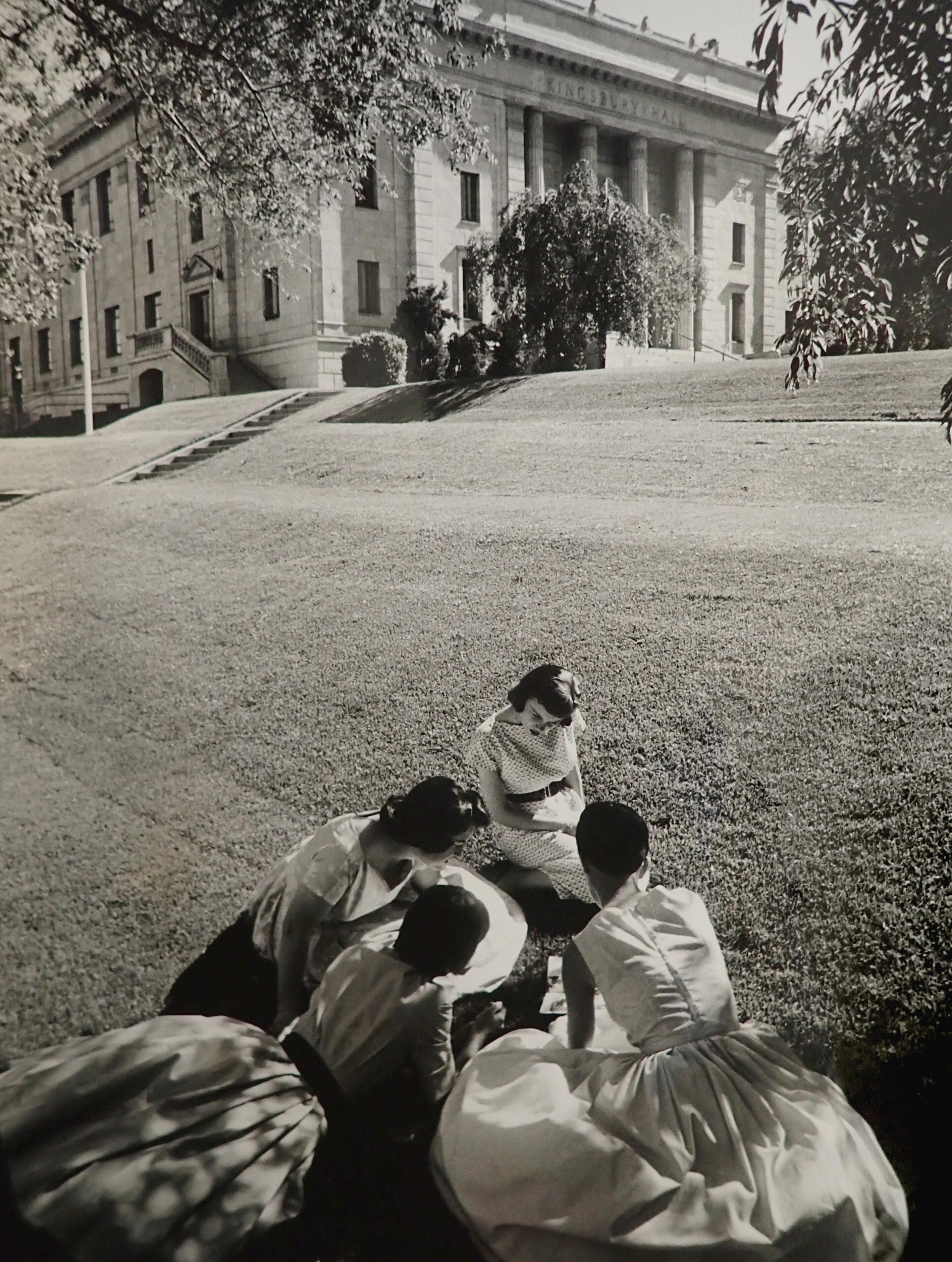
Retracing our history Alumni on tour Gittins Gallery 2.0 Price Family philanthropy Annual Report thanks College of Fine Arts contributors 02 10 26 36 38
THE OFFICIAL MAGAZINE OF THE UNIVERSITY OF UTAH COLLEGE OF FINE ARTS
Time has an interesting way of changing us. It can refine our jagged edges and purify our murky waters. It can illuminate our imperfections and give us the space to address them. Time is what makes way for wisdom, expertise, and growth.
The year 2023 marks the College of Fine Arts’ 75th year of existence in the fertile grounds of the University of Utah, and it has prompted our reflections on our time and who and what we have become.
For our college, time has allowed our roots to deepen, to find greater breadth, and to find new sources of fuel. With each inch and foot of stabilizing power, our capacity to reach further into the skies has expanded.
And my how we have blossomed.
Buds became shoots, the shoots have become limbs, and the limbs have created a sturdy structure for new homes. Those homes have welcomed an increasingly diverse community of students, faculty, and staff who expand our excellence and influence in a multitude of new creative directions.
In this issue of Studio, we create space to honor the seeds from which we have grown, those thriving in our ecosystem, and those who have enriched our soil and given us light.
I hope you enjoy these stories of how we became rooted and the ways in which we continue to thrive. ■
JOHN W. SCHEIB Dean, College of Fine Arts

STUDIO / 2023 LETTER from the DEAN
Photo: University Marketing & Communications
THE PLACE WHERE DILIGENCE AND EXCELLENCE BECOME INFLUENCE
FROM WHENCE WE CAME /
This retrospective editorial retraces the last 75 years of the University of Utah College of Fine Arts (and even farther back).
GITTINS RISING /
In honor and memory of Alvin Gittins, the Department of Art & Art History opened the doors of its new state-of-the-art exhibition space.
DANCING AROUND THE WORLD /
The School of Dance’s Character Dance Ensemble resumes travel to seek out and celebrate cultural dance around the globe.
REFRAMING THE SHOT /
The Department of Film & Media Arts’ spaces and technology have recently seen an overhaul, enhancing the student experience and career preparedness.
RESEARCHING & REVEALING /
Music alumna Misti Webster’s graduate thesis on Zitkala-Ša unearthed this Indigenous activist’s lesser-known passion for music.
NOW ON TOUR /
To these three Department of Theatre alumni, all the world really is their stage.
MOVING TOGETHER /
UtahPresents and the School of Dance brought BIPOC ballet company, Collage Dance, to campus for a monumental collaboration that sparked inspiration on stage, with our students, and in the community.
A FORCE TO BE RECKONED WITH /
We celebrated 10 years of the ArtsForce program that, in response to alumni feedback, has provided our students the tools they need to transition from school to the modern workforce.
BRIDGING THE STATE /
This story illuminates the impacts our Arts Education faculty and students are having not just here in Salt Lake City, but all across Utah.
GUEST ARTISTS & SCHOLARS /


In addition to the impact of our renowned faculty, students in the College of Fine Arts benefit from the multitude of guest artists and scholars brought to campus each year.
RE:GENERATION /
Art enthusiasts at their core, the Price family has deeply impacted the growth and development of theatre at the U.
ANNUAL REPORT /
It is with overwhelming gratitude that we name those who fuel the continued success of the College of Fine Arts with their generosity and philanthropy.
CONTRIBUTORS + THANKS
STUDIO / 2023 TABLE of CONTENTS
'23
Photo: Kerri Hopkins
30 32
34
02 10 14 18 22 26 28
36 38 40
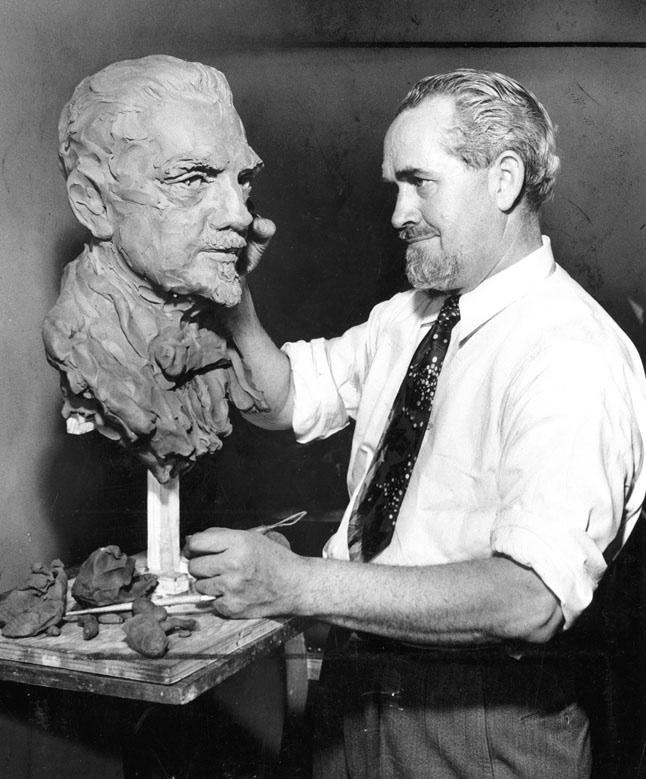
2 STUDIO / 2023
STUDIO / 2023
Photo: “Avard Fairbanks” Repository: University of Utah, Utah State Historical Society Classified Photo Collection, Photo number 12233, Used by permission, Utah Historical Society
Artist and sculptor, Avard Fairbanks, served as the first Dean of the College of Fine Arts
From Whence We Came
RETRACING A HISTORY OF CREATIVE EXCELLENCE
BY Sydney Cheek-O’Donnell AND Marina Gomberg
Take a look at the College of Fine Arts in 2023, and it is clear that it’s a tapestry of influence sewn thread by thread, reflecting the impact of each individual that has filled its spaces, dared to dream, and invested their brilliance.
3 STUDIO / 2023
75 years is quite a history.
As philosopher and writer George Santayana said, “To know your future, you must know your past.” And what a joy it is to look back.
There were but 18 faculty members on staff in 1892, when the University of Deseret became the University of Utah. Despite its meager size, the university’s commitment to the arts was already well established by the time of its renaming. In addition to courses in music, the institution already had a budding Art Department, offering a four-year program focused on drawing and painting.
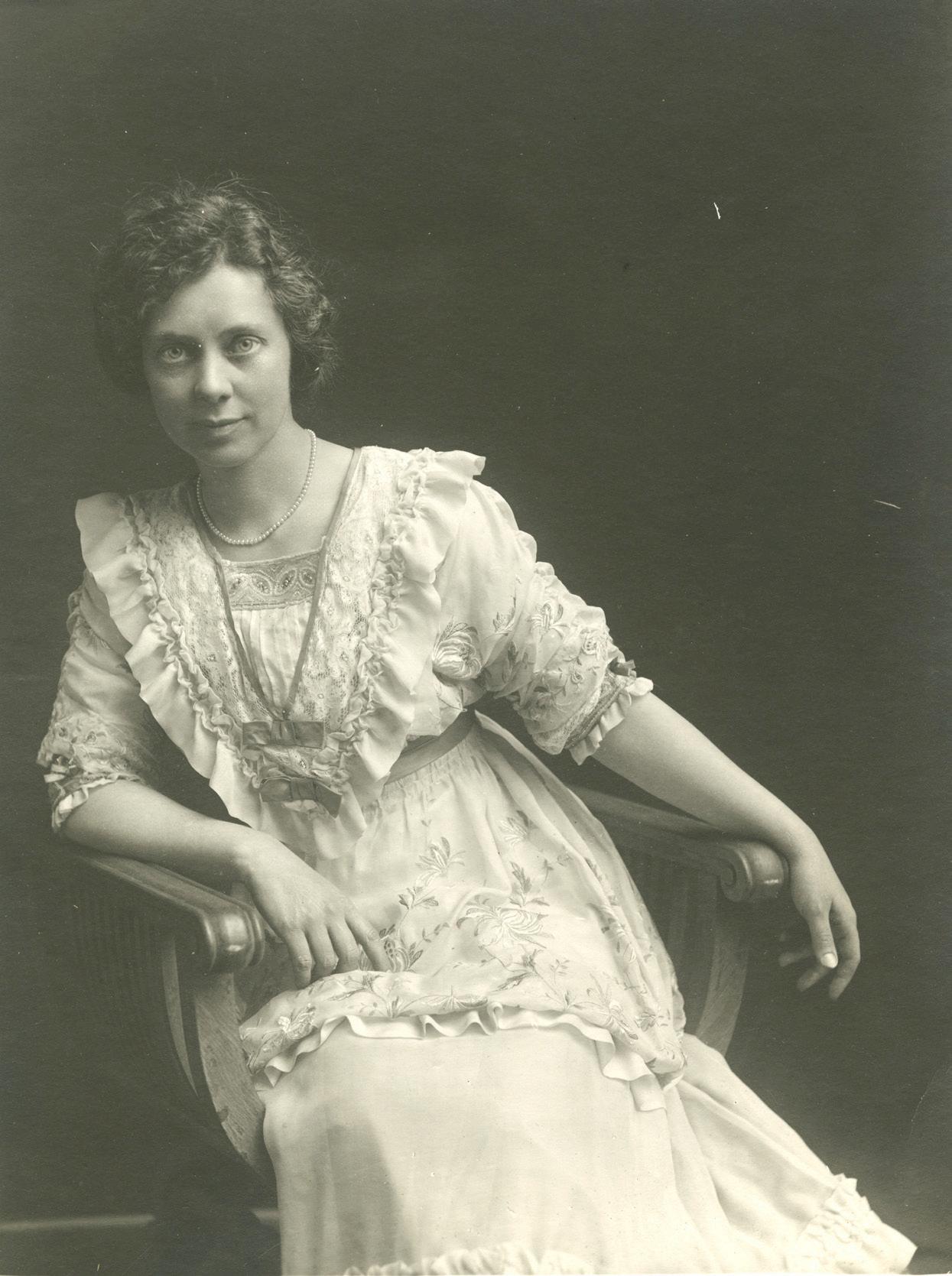
In fact, the first textbook produced by a U faculty member was about music.
Written by Evan Stephens and published in 1883, “A Primer and First Reader of Vocal Music” remains of great relevance. Google Books notes that it is identified by scholars as “culturally important, and is part of the knowledge base of civilization as we know it.”
The early inclusion of the arts in the university’s curriculum reflects the values and activities of the pioneers who migrated to the Salt Lake area in the nineteenth century. Theatres and music halls were among the first structures they built, along with homes and businesses.
4 STUDIO / 2023
Photo: “Maud May Babcock, undated” Repository: University of Utah, P0337 Lila Eccles Brimhall Photograph Collection, 1893-1962, Photo number: P0337n1_05_032 (Altered)
“First Lady of Utah Theatre,” Maud May Babcock, was the University of Utah’s first female faculty member; she is credited for starting dance and theatre education at the U
Of course, the arts were practiced in this area long before the arrival of white settlers, as evidenced by the many pictographs and petroglyphs that adorn the rocks of our state. The Shoshone, Paiute, Goshute, and Ute tribes, on whose land the U stands, have vibrant artistic traditions as well, including beadwork, leatherwork, weaving, sculpture, storytelling, ceremonial music, hand-game songs, and social dance music.
The reverberations of that passion can be felt today and traced back through the history of the arts at the U. And it’s an exciting path.
It was also in 1892 that the first female faculty member, Maud May Babcock, was hired. A trained actress from New York, Babcock taught “elocution” and “physical culture,” which include theatrical performance and dance.
Under her guidance, theatre in its first iteration at the U, was born. Lovingly known as the “First Lady of Utah Theatre,” Babcock’s early legacy was so instrumental that our students still perform in a theatre bearing her name, on the lower level of the Pioneer Memorial Theatre Building.
It was during Babcock’s time that Kingsbury Hall, the iconic center for performing arts on Presidents Circle, was built. Completed in 1930, it not only provided a grant stage for the productions she produced with students, it also provided a place for nationally renowned professional artist to perform on campus, a tradition begun by Babcock that continues today.
In 1940, Elizabeth R. Hayes was appointed Director of Modern Dance, and soon after established the university’s first dance major. Hayes, an indefatigable advocate for dance and the arts, was a founding member of the national organization Council of Dance Administrators and was one of three representatives from across the nation who travelled to Washington, D.C., to argue for dance as a federally recognized academic discipline.
She was instrumental in the development of the National Association of Schools of Dance, the discipline’s accrediting body. Much of how dance exists in higher education in our country today can be attributed to Hayes’ pioneering spirit and ideas about how dance could exist as a distinct academic discipline.
During that decade, another incredible influence arrived. In 1947, famed portrait artist Alvin Gittins joined the faculty. He was an advocate of academic realism who practiced a rigorous technical approach to teaching and who served as the department’s chair for six years.
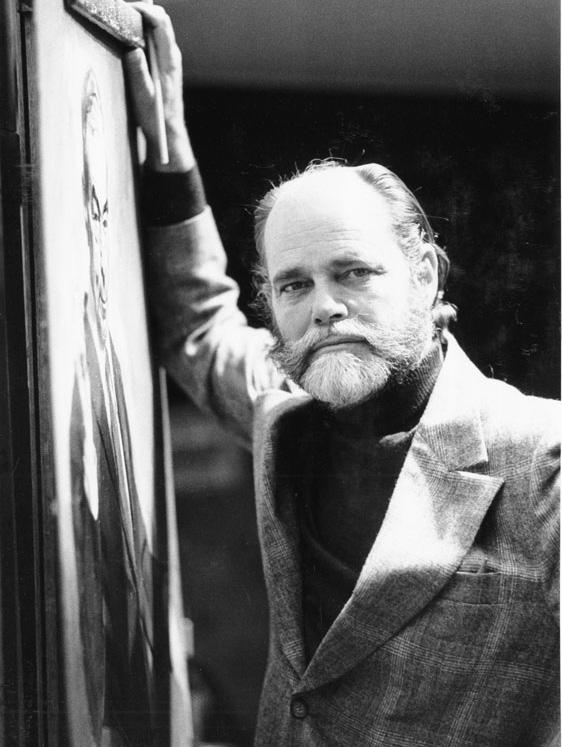
As the U’s artist-in-residence, he painted 89 portraits of individuals connected to the university, including presidents, researchers, scientists, physicians, and other artists.
His influence would live on through the many people he taught and through the gallery named in his honor, first located in the Art Building and re-opened in the Film & Media Arts Building this past spring, 2023.
And with music, studio art, dance, and theatre, the College of Fine Arts (CFA) was officially established in 1948, with sculptor Avard Fairbanks serving as its first dean.
5 STUDIO / 2023
Photo: “Alvin Gittins” Repository: University of Utah, Utah State Historical Society Classified Photo Collection, Photo number 12359, Used by permission, Utah Historical Society
Famed portrait artist and professor Alvin Gittins works can be seen all across campus and the state
TO KNOW YOUR future, YOU MUST KNOW YOUR past.
“ ”
Baccalaureate degrees in the CFA were considered professional in nature, meaning they were training students to work in the profession and/or teach. The college also offered the Master of Fine Arts, Master of Music, and PhD degrees.
That same year, the Music Department welcomed LeRoy Robertson, who was at that time the most famous composer in Utah, as its chair. Thus began Music’s “modern era,” which was followed in short order by accreditation from the National Association of Schools of Music in 1952.
It was around that same time that ballet took center stage when the Department of Speech (which offered theatre courses) established University Ballet Theatre. Just a year later, noted dancer, teacher, choreographer, and founder of the San Francisco Ballet, Willam F. Christensen, came back to his home state and began a ballet training center at the U, while also founding what would later become Ballet West.
The Ballet program shared space in the former student union building — now David Gardner Hall. And in 1955, the Department of Music would move in with them. The energy of many artists in one space fostered creative community.
Across campus, a future pioneer of U Theatre had arrived as a sophomore transfer student in 1954. Though there was not yet a Department of Theatre, Anne Cullimore Decker took speech and public speaking courses — including one from Royal Garff, who had written the textbook they studied (and that she would later use as a high school theatre teacher at East High).
Ballet and Theatre separated from the Department of Speech in 1962 to become the Department of Theatre &
Ballet, and then in 1966, the Department of Ballet and Modern Dance was established, creating one of the first (perhaps the first) ballet programs in higher education in the nation.
Things were percolating in a new area of the arts in the early 1970s, when English Professor Tom Sobchack taught the U’s first film course and dreamt of what would eventually become a department enrolling more students than any other academic unit in the CFA.
Specialization and individuation were happening in other disciplines around that time as well. In 1978, Ballet and Modern Dance became two distinct departments. And in the early 1980s, under the leadership of Bill Siska, the Film Studies Program was formed, a combined effort of the Art, Theatre, and English Departments.
Anne Cullimore Decker returned to the U in 1980 to get her master’s degree, and eventually taught on the faculty in the Actor Training Program (ATP) in 1984, which had been recently established by beloved professor and mentor, Kenneth Washington.
Washington had come to the U as a grad student to study dance, and ended up gravitating toward theatre, where he ultimately began teaching in 1976. His legacy lives on today through his personal impact and the ATP’s continued national reputation for excellence.
"He imbued in me such a respect for the craft and such a multi-faceted way of looking at creating a character and entering truthfully into the world of the playwright,” said theatre alumnus, Christopher Borg. “I am still employing techniques, theory, and a point of view and entry into a character that I learned from Kenneth Washington 30 years ago."
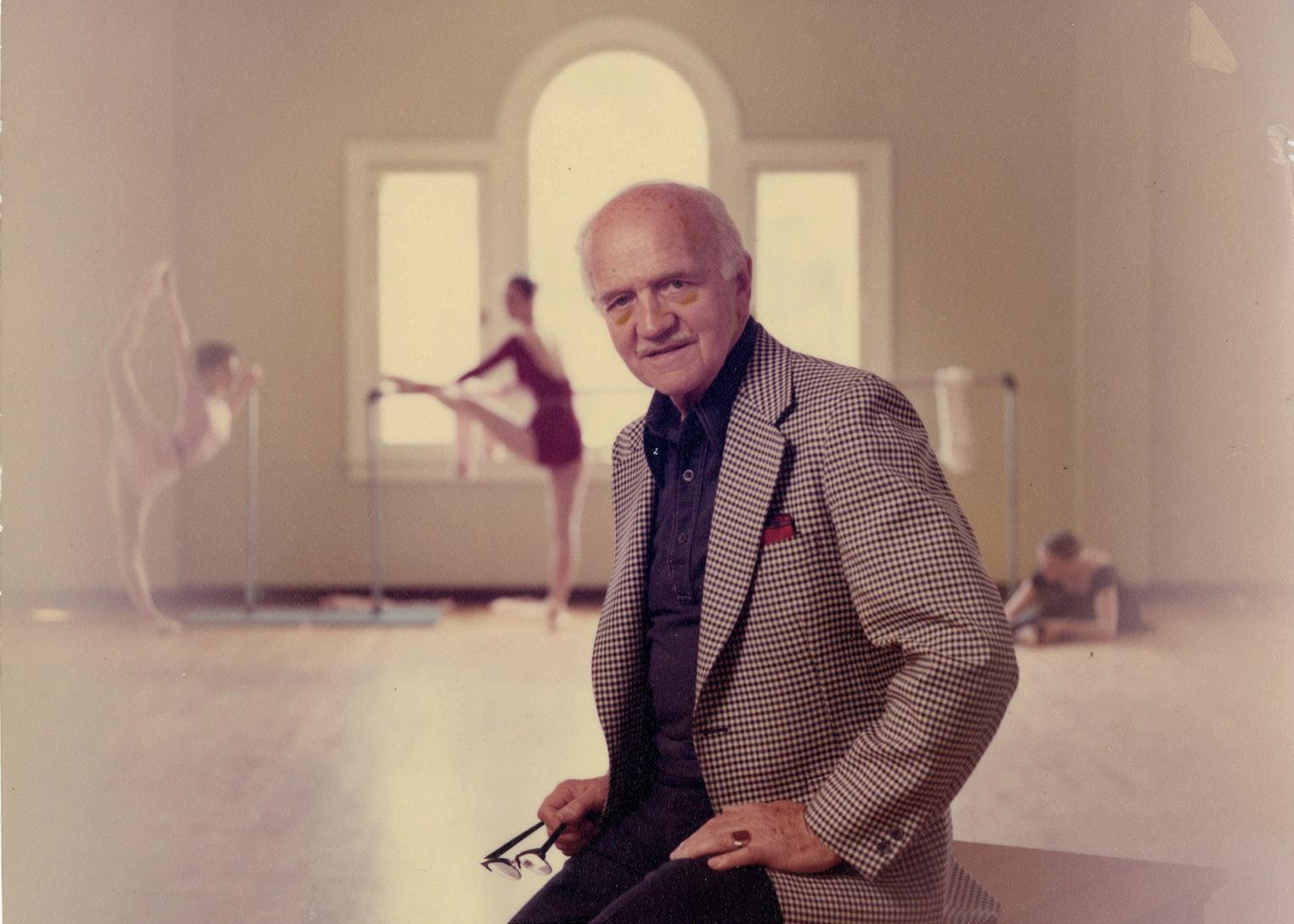
6 STUDIO / 2023
Photo: “Willam Christensen portrait” Repository: University of Utah, Barbara J. Hamblin Collection, Photo number: P0593n01_02_001 (Altered)
Faculty member, Willam F. Christensen, famous dancer, teacher, choreographer, and founder of the San Francisco Ballet and Ballet West
At the end of that decade, the Alice Sheets Marriott Center for Dance was built and opened its doors in 1989. The contemporary space, made specifically for dance training and performance included a 333-seat theatre, six spacious dance studios, and ample dressing room space.
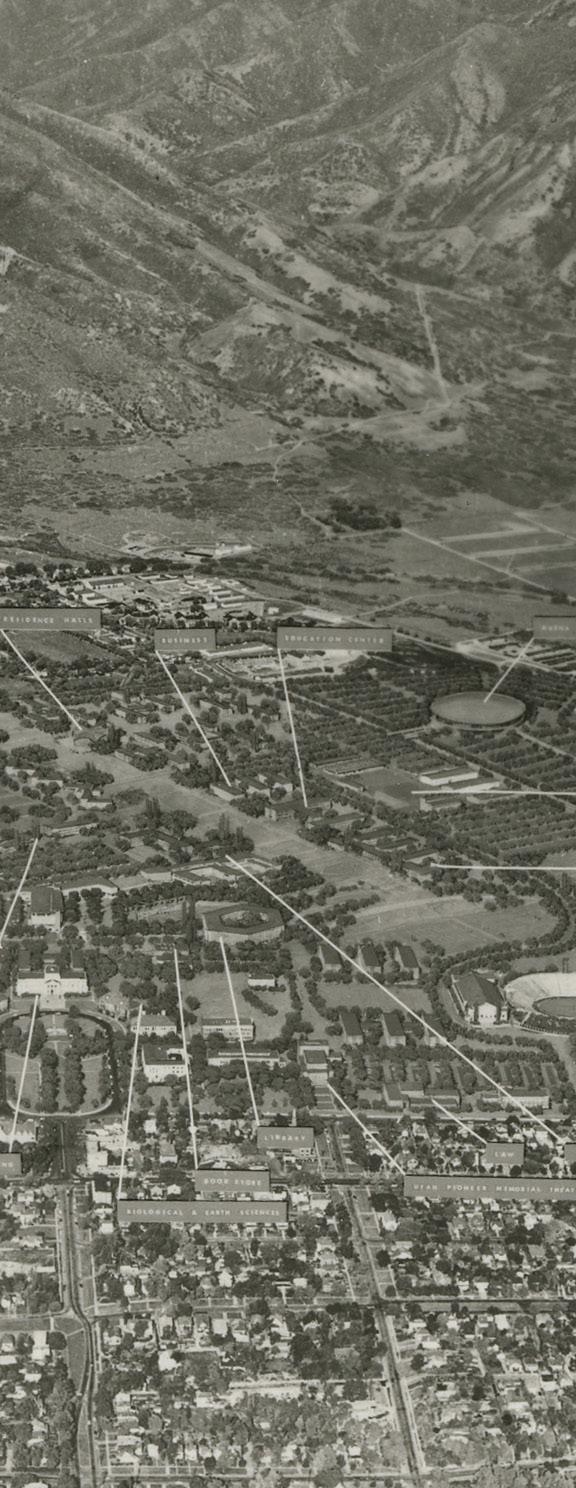
For both the modern dance and ballet programs, as faculty were developed and the curriculum grew, the excellence of these programs served as examples for other university dance programs.

It was also in 1996 when the Department of Art expanded to become the Department of Art & Art History.
Film studies was also on an upward trajectory. “Under Professor Siska’s direction, guidance, and administration, the Film Studies Program grew and flourished, and was soon graduating as many or more students than the other academic units,” said Professor Brian Patrick, who also served as the director from 19931998. “This is astonishing growth for a new program.”
And although all academic units have significantly grown since then, Film & Media Arts now leads the pack in number of annual graduates.
At the turn of the 21st century, the School of Music, which had moved out of David Gardner Hall during the building’s massive renovation and expansion, moved back into a stunning, modern state-of the-art space equipped with a new concert hall, rehearsal rooms, faculty offices, and practice rooms. In two short years, and because of its growth and advancement, what had once been the Department of Music became the School of Music. This name change reflected the comprehensive structure of graduate and undergraduate degree programs offering outstanding performance experiences balanced with rigorous professional and academic training.
In 2002, the nation’s first ArtsBridge program was established at the U. ArtsBridge is an arts education outreach program that provides valuable experiences for university students to work with local K-12 students. Its work continues to this day, making it the longest running program of its kind in the nation.
7 STUDIO / 2023
Photo: “Campus aerial views,” University of Utah [06]” University of Utah (Altered)
Photo: “1868-69 General Catalog” University of Utah, University of Utah, 1869, Page 1 (Altered)
University of Deseret, the University of Utah’s original name, general catalogue from 1869 over an aerial photo of campus from the 1960s
This was a first of many foundational moments in what is now an award-winning Arts Education program. Three years after ArtsBridge started, the U became the first institution to receive a Beverley Taylor Sorenson Arts Education Endowment. This endowment is responsible for holding a pre-service Arts Integration Conference, ArtsLINK, that offers students instruction in arts integration, opportunities to engage in collaborative planning, and practice instructing K-6 students. And in 2007, the CFA established the role of Assistant Dean for Arts Education, reaffirming the importance of teaching the arts in addition to the value of making it.
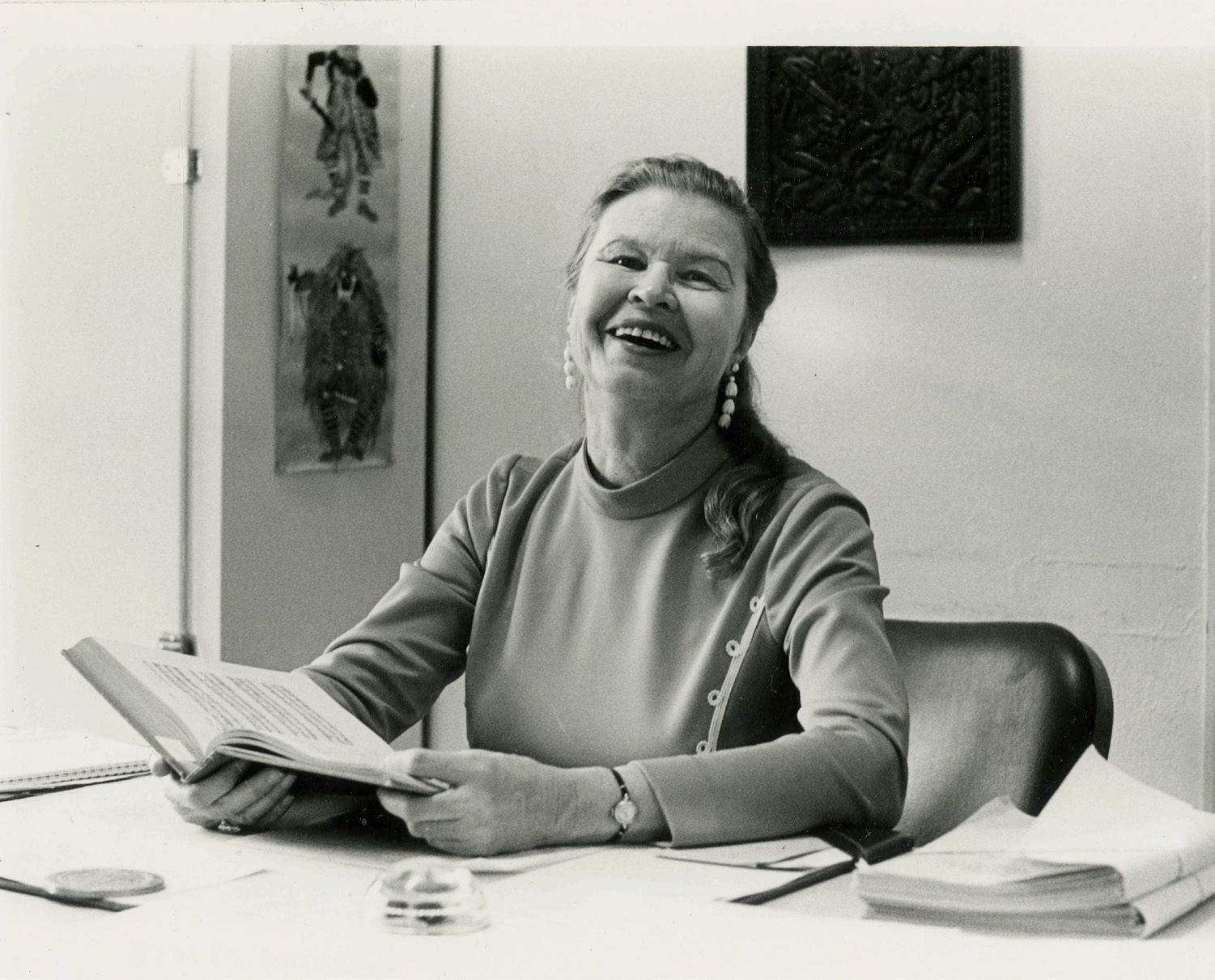
Toward the end of the first decade of the 21st century, and after thoughtful vision and stewardship, what was the Division of Film Studies became the Department of Film & Media Arts under the leadership of then Chair Kevin Hanson.
Elizabeth
“

THE CFA HAS AN EXPANSIVE FOOTPRINT FROM ONE END CAMPUS TO THE

A few years later, in 2016, the departments of Modern Dance and Ballet, merged to become the School of Dance, a comprehensive unit offering professional undergraduate training and terminal graduate degrees for future academics.
With the sustained growth of the college, the faculty’s creative and scholarly research kept producing more demand for arts education programs and opportunities. In 2018, arts education faculty members came together to create and launch a new Master of Arts in Teaching – Fine Arts program (MAT-FA), which is now a nationally-ranked hybrid/online degree program designed to provide advanced training for professional arts educators working in schools, communities, and at arts organizations around the country.
The CFA also became the new home for the Utah Center for Vocology, which is an organization made
Repository:
8 STUDIO / 2023
Photo: Portrait of Elizabeth “Betty” Hayes, c1940s. University of Utah Libraries, Special Collections. P1534n09_02_018 (Altered)
R. Hayes established the university’s first dance major
Photo: “Anne Cullimore” by Larson, O. Blaine, Repository: University of Utah, Batch 12, Box 43, Photo No. 19758, Used by permission, Utah Historical Society (Altered)
(Left) Alumna and Professor Emeritus, Anne Cullimore Decker
Photo: “LeRoy J. Robertson with University Of Utah Orchestra [10]”
University of Utah, P0038 LeRoy Robertson photograph collection, 1945-1960, Photo P0038n02_01_137 (Altered)
(Center) University of Utah Orchestra with LeRoy J. Robertson
Photo: “Alexander Schreiner with Maurice Abravanel, William Fowler, and LeRoy J. Robertson” Repository: University of Utah, Utah State Historical Society Classified Photo Collection, Photo 27731 (Altered)
(Right) Left to right: LeRoy J. Robertson; William Fowler; Maurice Abravanel; Alexander Schreiner
up of active researchers, professors, clinicians, and graduate students in areas across campus, including the Department of Communication Sciences and Disorders, Department of Theatre, School of Music, and Voice Disorders Center.
Now, in 2023, the Film & Media Arts Building and the Price Theatre Arts Building have been renovated, we have the brand-new, state-of-the-art Alvin Gittins Gallery exhibition space, and we will soon open the doors of Meldrum Theatre in the renovated Einar Nielsen Fieldhouse. The CFA has an expansive footprint from one end of campus to the other. Similarly, we graduate roughly 400 students each spring, expanding the impact of the College on local, regional, national, and international arts scenes.
Through every step of the journey, we see common threads: persistence, grit, and creativity. The CFA is a product of the commitment of the people on whose shoulders we now stand. And their story reaches far
AN FOOTPRINT END OF THE OTHER.

beyond our campus. Not only have the U’s artists and arts scholars made significant impacts at the U, but they have also changed our entire state for the better.
In addition to the Utah Museum of Fine Arts, Pioneer Theatre Company, UtahPresents, and Tanner Dance, the four professional arts affiliate organizations on campus, we celebrate the CFA’s influence in the creation of Ballet West, Repertory Dance Theatre, RirieWoodbury Dance Company (all three of which started at the U), Utah Symphony, and other locally and nationally recognized arts organizations.


We are honored to be celebrating such a momentous anniversary this year, and while we don’t have nearly the space to acknowledge all the people and processes that got us here, those histories are alive and well in our classrooms, studios, theatres, and halls.

May our next 75 years be as inspired. ■


”
The space begs your presence the second you walk through its doors. It’s an invitation made by light and radiant beauty, enticing you to come in and experience new things.

This is the new Alvin Gittins Gallery on the University of Utah campus. An airy 2,360 square-foot exhibition space filled with natural light from the walls to the floor-to-ceiling windows. Its beautiful starkness is punctuated by color, texture, and meaning — the works that adorn its walls and rooms.

Retrofitted to be a state-of-art facility, the new gallery located in the renovated Film & Media Arts Building boasts two new video/installation spaces, an additional small gallery in the foyer, more square footage, energy efficient lighting, movable walls, restrooms located adjacent, kitchen for catering, ADA accessibility, adjustable climate control, and sound control.

10 STUDIO / 2023
Photo: Brandon Cruz
Donors, patrons, and CFA leadership mingle at the opening of the new Gittins Gallery first exhibition, “Return,” featuring alumni from the Department of Art & Art History
By Marina Gomberg


11 STUDIO / 2023
Much about it is new. But not its name, thanks to the Wheatley family.
Since the 1980s, the Department of Art & Art History has enjoyed a gallery named after famed portrait artist and former professor Alvin Gittins. And even though the namesake’s gallery has moved, his legacy remains prominent and palpable.
Famous for being among America’s greatest portrait artists, Gittins’ talents are known the world over. But perhaps his greatest legacy is one those of us here in the U community know best: his impact as a teacher — someone who didn’t just share his love for his craft, but someone who could inspire that same passion and excellence in others.
Born in England, he moved to the United States in 1946 and attended BYU, though his allegiance would turn from blue to red in short order. By the following year, he began his tenure as a faculty member in, and later as chairperson of, the department.
Gittins was an advocate of academic realism who practiced a rigorous technical approach to teaching and who received the Distinguished Teaching Award in 1976 and the Utah Academy of Sciences, Arts and Letters Distinguished Service Award in Arts and Letters in 1980. As the university’s artist in residence Gittins painted 89 portraits of individuals

connected to the institution including presidents, researchers, scientists, physicians, and artists.
With its relocation from the ART Building, the new gallery is an even more prominent anchor in the U’s visual arts corridor on campus along with the Utah Museum of Fine Arts and the Departments of Art & Art History and Film & Media Arts.
Its doors officially opened in spring 2023 with an exhibition called “Return” featuring alumni of the Department of Art & Art History from various disciplines including Art Teaching, Book Arts, Ceramics, Graphic Design, Illustration, Painting and Drawing, Photography, Printmaking, and Sculpture.
Among the works were five very special paintings: a self-portrait by Gittins, a portrait by Gittins of Mary Lois Wheatley, a protégé of his and a beloved wife, mom, and friend, and then three works by Mary Lois (a self-portrait, a landscape, and her portrait of Anne Osborn).
A painter from an early age, Mary Lois studied art in the department and graduated in 1948 with an enduring passion for portraiture nurtured by Professor Gittins. Like him, she didn’t paint just to create resemblances of others, but to illuminate their true selves.

12 STUDIO / 2023
Photo: Brandon Cruz
Photo: Brandon Cruz
Patrons viewing “Collapse” by Denis Phillips in the new Gittins Gallery located in the renovated Film & Media Arts Building
Patrons viewing alumna Mary Lois Wheatley’s self portrait at the opening reception for “Return” featuring Art & Art History alumni
…an open, respectful center for diversity and creative expression.
The naming of the gallery was made possible by the generosity of the Wheatley family and their reverence for their mother’s passions. At an opening reception of the space, Mary Lois’s son Charles spoke to the packed crowd.
He pointed back to the stunning portraits of his mom as he spoke about her love of painting as a way of expressing herself and seeing others. His admiration for her emanated like light from the podium.
Mary Lois’ artistic drive was fueled by her time at the U and acted as a springboard for her move to Manhattan to study at the prestigious Art Students League of New York. That’s where she met aspiring engineer, Jack Wheatley, who was studying at West Point Military Academy and who would go on to become the love of her life.
Their relationship blossomed, they married in 1952, and over the years, Mary Lois’ collection of portraits grew, illuminating those she loved most: their children, grandchildren, and her most beloved friends.
Dr. Anne Osborn, Distinguished Professor of Radiology at the U, is one of the latter. Dear friend of Mary Lois, Osborn is also deeply inspired by the arts. She spoke at the reception about the power and value of supporting creative and cultural pursuits.
And she walks the walk.
In another heartwarming tribute to the Wheatley matriarch, Osborn, along with the Wheatley family,
established the The Mary Lois Wheatley Presidential Endowed Chair in Art and Art History — the first for the department — which was bestowed upon Department Chair, V. Kim Martinez.
The endowment signifies the considerable prestige of this academic appointment, illustrates the commitment on the parts of those whose philanthropy made it possible, and provides critical support necessary to transform new ideas into reality.
“The dynamic environment created within the department is fertile ground for those serious about art-making, graphic design, research, critical discourse, and teaching,” Martinez said when she accepted her new role. “Our faculty are dedicated to excellence and providing an open, respectful center for diversity and creative expression. The department mentors students in innovation, critical thinking, craft, exploration, and are creating exciting opportunities for interdisciplinary collaborations.”
And now that place, both the physical and metaphorical, is even richer with potential, and will allow for more contemporary and experimental works to be created with an eye to future possibilities for artists — both students and professional — to grow and expand their research. ▪

13 STUDIO / 2023
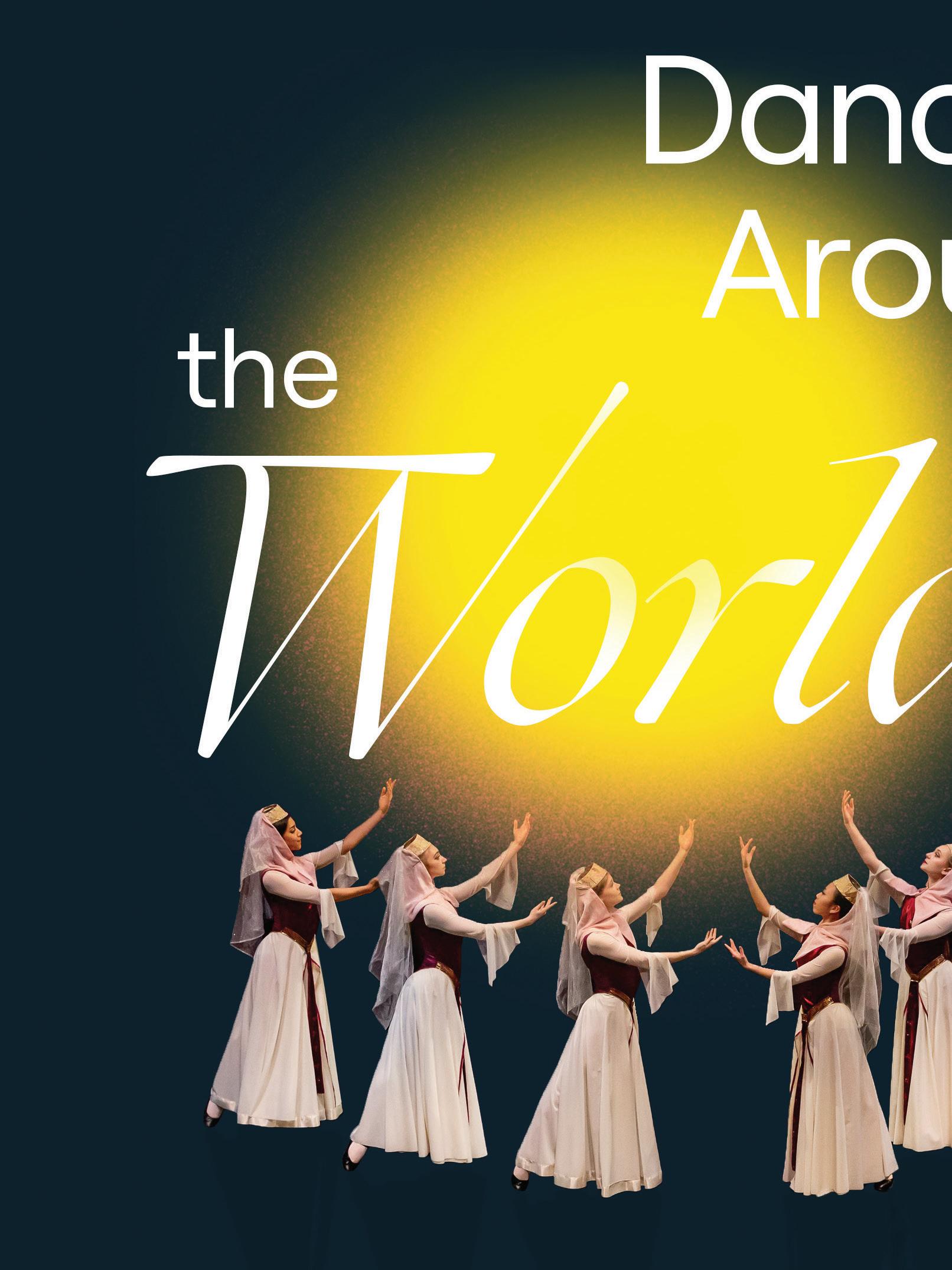
The Character Dance Ensemble studies in Japan after a pandemic pause in travel
By Julia Lyon
After the pandemic prevented the Character Dance Ensemble (CDE) from traveling for three years, the School of Dance student group finally crossed the globe once again to dance and learn this spring. Fourteen students flew to Tokyo in May to study traditional Japanese dance — and perform CDE repertoire.

“It’s eye opening to see how much dance there is around the world and to be a part of it,” said Megan Lynch — a senior double majoring in ballet and history and the CDE president.
As a freshman, Lynch had hoped to go to Japan with CDE in 2020, but — like everyone else — her world turned virtual in March that year. So the School of Dance brought the world of dance into students’ living rooms.
Photo: Mickey Hoelscher
CDE performing “Gragnili Baliki” with Eastern Arts, 2019
Once a month, students learned from dance experts in Afghanistan, the Blackfeet Nation, Uzbekistan, West Africa, and more. One class, with an Azerbaijani dance teacher, particularly stood out for Lynch.
“It was midnight his time and morning for us and it was the most amazing experience,” she recalled. “We were all in our living rooms dancing together.”
Richard Wacko, then a dance professor at the U, founded CDE in 1995. Students who had taken the ballet character class wanted a chance to perform. The school was frequently getting requests for performances of dances from other countries. The group, which eventually became a student club to allow them to fundraise, started touring a few years later.
The ensemble has helped generations of students learn more about character dance, which can be described as “balleticized folk dance.” Typically, CDE travels to a different country each year so students can learn and perform.
“Traveling to different regions allows for the discovery of nuances and context, so we may enhance our movement and avoid a caricature of a culture,” said Justine SheedyKramer, the CDE faculty advisor, who also danced with CDE as a student. “We can learn more about where these movements came from and whether what we’re presenting is accurate.”

The character dances in major full-length ballets such as “Swan Lake” and “The Nutcracker” originally introduced audiences to more exotic parts of the world.
“People couldn’t travel to those countries as easily — it was kind of this mystery,” Sheedy-Kramer said.


More than 100 years later, she believes studying the roots of those dances can benefit students now and in the future.
“If we can supplement classical ballet repertoire with primary source material, it helps dancers and teachers gain a better understanding of authentic movement and cultural context,” she said.
Over the years, CDE has built up a repertoire of character dance from around the world, some of which they performed in Japan this spring. That includes dances from Ukraine, Belarus, the country of Georgia, and Bulgaria. The students often return from an international trip with an expanded repertoire.
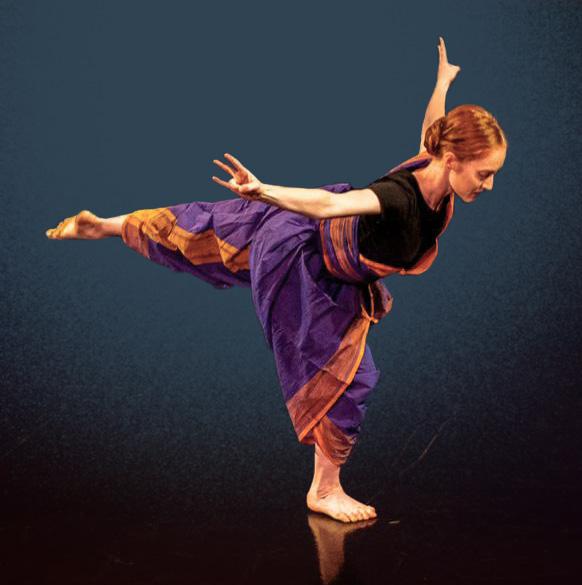
After their 2019 trip to the Czech Republic, they brought back a dozen different dances from that country and surrounding regions. But the trips don’t only teach them about dance. They become a window into a different country’s culture and history.
During a 2008 CDE trip to the Basque region of Spain, the students danced all morning with local dancers, ate with them, and then came back and danced some more.
As the students danced, they could see some of the local dancers’ young children dancing on their own nearby. And dancing better than they were.
“Because they were dancing from the time they could walk,” Sheedy-Kramer recalled. “It was so engrained in their culture.”


On that same trip, the students went to a village in France and watched a play about spring renewal that included dances and rituals that had been handed down

16 STUDIO / 2023
“Traveling to different regions allows for the discovery of nuances and context, so we may enhance our movement and avoid a caricature of a culture...We can learn more about where these movements came from and whether what we’re presenting is accurate
.”
Photo by Venkata Harsha Nori
Megan Lynch performing in a preview of “Sangam” with Nitya Nritya Foundation, 2022
for hundreds of years. Part of the theatrical performance the students watched included the slaughtering of a lamb.
“That was shocking, but that was part of the tradition,” she said.

On a 2004 CDE trip to London, the audience began to clap and unexpectedly joined the students onstage during their performance of the national dance of Afghanistan.
“We realized this was much more than us learning the steps,” Sheedy-Kramer said. “It turned out many of the audience members, who were Afghan immigrants, hadn’t seen the dance or heard the music since leaving their country.”
Whatever country the students visit, they attend dance performances and study with master teachers. That can range from experts with the Mariinsky Ballet in St. Petersburg, Russia, to the Beijing Dance Academy in China.
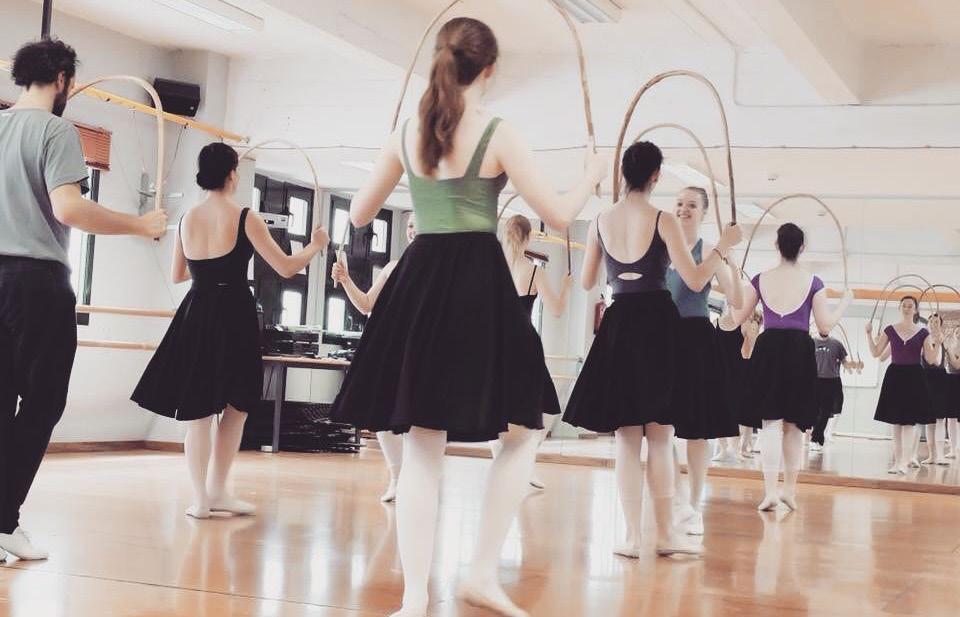
“You’re here to learn,” Sheedy-Kramer tells the students. “But also to be an ambassador for dance, the nation, and the University of Utah.”
CDE members raise money throughout the school year to pay for the trip. That includes flower sales at student shows, fundraising nights at local restaurants, and even having a pie thrown in their faces on Halloween.
“I got pied in the name of going on an international trip,” said Lynch, the senior. “It seems a worthy cause.”
The students also offer their own master classes in Utah, which sometimes bring in donations.
“We aim to share all our resources as far and as wide as we can,” Lynch said.
As she sees it, CDE is a “hidden gem” at the School of Dance. They rehearse one night a week, often after most dancers are gone for the day. Many students have already spent eight hours dancing before CDE rehearsal even begins.
“There’s a great deal of dedication and commitment by the students,” said Christine McMillan, the Ballet Program Head.
Every ballet BFA major is required to take a character dance class, typically during their freshman year. Joining CDE allows students to go deeper. And CDE is continuing to broaden its repertoire.
Though most character dance in ballet tends to be from Western European countries, Sheedy-Kramer, the CDE advisor, is expanding the definition of what some people traditionally consider character dance in ballet.
“She’s making sure we have a broad understanding of many cultures with traditional dances,” McMillan said. “We talk a lot about versatility within the dance profession. Dancers today are expected to do so many different styles. Through CDE those students are exposed to a variety of different movements and different music that enhances their overall ability to pick up details of movement, timing, and phrasing along with developing a greater appreciation for how dance exists in a variety of contexts.”
As the CDE dancers prepared for their trip to Japan, excitement was high among the close-knit group.

“I know it will be beyond rewarding,” Lynch said. “Not just the things I learn, but the experiences I have with people I know so well.” ■

17 STUDIO / 2023
Photo:(cc) by-sa Josu Garate / Dantzan.eus
Photo: Kyoko Shichi
CDE studying with Dantzan Dance Company in the Basque Region, 2017
CDA taking class with Nihoh Shizuka and the Nihoh-kai Ensemble in Japan, 2023
By Debbie Hummel
REFRAMING THE SHOT

18 STUDIO / 2023
Photo: TWIG Media Lab Film students working on a lighting set-up
(left to right) Gabe Brown, Lana Ballenot.
Amajor transformation is taking shape in the Film & Media Arts Building bringing the University of Utah Film program up to speed and its students prepared to step behind the camera anywhere in the world.
For more than a decade, the program has been working toward building a state-of-the-art studio space, and a couple of years ago the department recognized it needed the new space sooner rather than later, Chair Andrew P. Nelson, PhD said.
“Historically the departments’ biggest challenge has been facilities. We exist in a building built in the 1970s for a museum and we’ve been repurposing things for years waiting for substantial renovations. Some of those changes, after a long wait, are happening,” he said.
In a large room in the nearly windowless building, students can now train in spaces that will prepare them for filmmaking in any major studio.

“Students will be able to step from working in this space to working in any number of situations they would encounter in Los Angeles,” Nelson said.
After a year of construction, the 1,500-squarefoot, high-ceilinged open area where students once built a film set, there is now a massive curved wall, or cyclorama, which gives the impression of infinite space. It can also be lit so the subjects in the foreground don’t cast shadows. Above are lighting rigs that allow students to learn different lighting techniques and the department has also invested in cameras and other equipment that allows students the hands-on training they need to be successful in their careers.

“It’s the kind of upgrade in technology that brings the program again into the forefront of media arts,” Nelson said. “We’ve definitely come a long way in three years. The space is really remarkable.”
Adjacent to the new studio is another space where an XR studio is in the works for virtual production. In the place of the current green screen will be an LCD video wall that will allow for filming scenes with any background imaginable without the dissonance that happens when you see live actors before a green screen.
Photo: TWIG Media Lab
The Advanced Cinematography and Advanced Grip and Lighting students film a project collaboratively.
19 STUDIO / 2023
“IT’S THE KIND OF UPGRADE IN TECHNOLOGY THAT BRINGS THE PROGRAM AGAIN INTO THE FOREFRONT OF MEDIA ARTS. WE’VE definitely COME A LONG WAY IN THREE YEARS.”
This is the kind of technology that is used for filming from television commercials to full-length features and allows filmmakers to take away the delays that can be caused by weather or losing a particular light.

“For example, a sunset can last all day,” Nelson said. “It allows our faculty to teach film curriculum that is contemporary.”
The Department of Film & Media Arts was the recipient of a Tourism, Recreation, Culture, and Convention grant from Salt Lake County that will help fuel the final phases of the project, most notably a remodel of the building’s auditorium into a modern cinema.
The basement auditorium in the building, at 414 seats, is the largest general assignment auditorium on campus. The planned remodel will convert the auditorium to a more reasonable 250-seat cinema that will be worthy of screening student films and available for other outside events. Once completed, the state-of-theart cinema will be capable of screening films in a variety of both digital and analog formats.
The pared down size of the auditorium will also allow for office spaces for the department’s awardwinning faculty.
Nelson says the roughly 700 Film & Media Arts majors who come to the U for the quality and caliber of the faculty will also now have an upgrade in the quality and professionalism of facilities available for all degree levels. Among the department’s talented faculty are twin sisters Miriam and Sonia Albert-Sobrino. The Also Sisters, as they’re also known, came to the U in 2011 for an MFA in Film Production and since 2018 are tenuretrack faculty.
“NOW WE CAN JUST TURN THE LIGHTS ON AND FOCUS ON THE story, FOCUS ON THE camera work, FOCUS ON THE creative aspect.”
Photo: TWIG Media Lab
Students in the Advanced Cinematography class rehearse a shot lit by the Advanced Grip and Lighting students. Behind camera: Samantha Mackin frames the shot on the doorway dolly while Lucas Adriá and Miles Nagel provide notes to actor Bailey Peterson.
20 STUDIO / 2023
“When we came to the department, it was very small. There were just a few basic production courses,” Sonia said. Those production courses could be cumbersome, spending more time fitting the space to filmmaking rather than practicing filmmaking techniques, the sisters said.
“Now the space is a professional setup conducive to focusing on capturing images,” said Miriam. “Because it is professionally built, the students are able to practice something in this studio and when they move onto a professional career they can go to a similar space and be able to navigate that comfortably.”
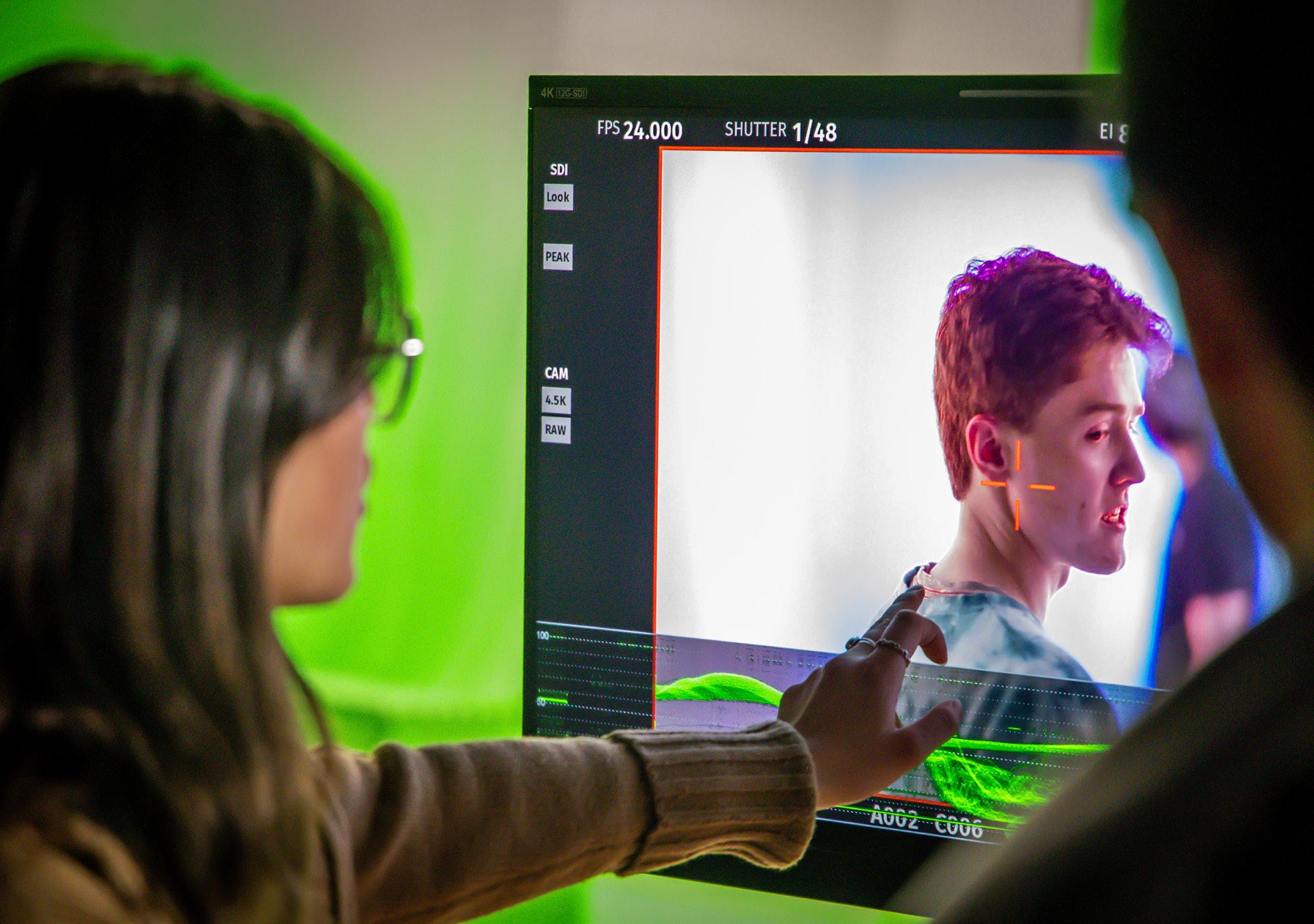
A classroom space is situated adjacent to the cyclorama allowing for more efficient teaching.
“Now we can just turn the lights on and focus on the story, focus on the camera work, focus on the creative aspect,” Sonia said.
The improvements also include a number of different cameras and the needed stands and screens to make for a professional environment.
“When teaching, you don’t have to speak of an abstract. You can demonstrate live what in the past was, ‘look at
this picture and get a sense of what you could one day work with’,” Miriam said.
As teachers, they are also excited about other improvements in the building that they feel are helping students work collaboratively and creatively.
“We have a new gallery, a conference room, and the student commons: a specific student-oriented area where they can work on their projects 24-7,” Miriam said. “The overall space in the building is now, more than ever, conducive to collaboration, a critical aspect in the process of making a film.”
The new gallery space, the Alvin Gittins Gallery, will host rotating exhibits of student work from many different disciplines in the university’s College of Fine Arts, particularly the Department of Art & Art History.
“Our improved space allows our students to be exposed to art in so many ways beyond filmmaking,” Sonia said. “We want our students to become artists who tell compelling stories. By immersing them in this space, where art surrounds them, we are certainly enriching their experience and the stories that they hope to tell in their films.” ■
21 STUDIO / 2023
Photo: TWIG Media Lab Student Ava Musick studies a shot framing Brandon Labarge

THE UNTOLD STORY OF HOW MUSIC SHAPED ZITKALA-ŠA’S LIFE
BY JULIA LYON
 Zitkala-Ša photographed by
Gertrude Käsebier ca. 1898.
Photographic History Collection, National Museum of American History, Smithsonian Institution.
Zitkala-Ša photographed by
Gertrude Käsebier ca. 1898.
Photographic History Collection, National Museum of American History, Smithsonian Institution.
When people think of Zitkala-Ša — if they’ve heard about her at all — they think of an activist, a Native American woman who spoke out against the residential school system and advocated for Indigenous and women’s rights.
“The melancholy of those black days has left so long a shadow that it darkens the path of years that have since gone by,” she wrote in “The Atlantic” in 1900.
School of Music Associate Professor Jane Hatter’s graduate musicology seminar on Gender, Music, and Performance in 2021 launched Webster on her research journey. Hatter had seen a Google Doodle in honor of Zitkala-Ša’s 145th birthday. The doodle portrays Zitkala-Ša next to a violin, which made Hatter want to learn more.
As it turns out, she had lived for a time in Utah. Hatter decided to include Zitkala-Ša on her seminar’s syllabus.
“I became fascinated by her as a person,” recalled Webster, who was then a student in the class. “I wanted to know more about her life in general — and not just the part she spent in Utah.”
She realized many people had written about the Native American woman, but primarily focused on her writing and speeches. What everyone seemed to overlook was that Zitkala-Ša was also a very good musician.
Being a woman and a Yankton Sioux, Zitkala-Ša had “a lot of limitations on what she could do from a social standpoint,” Webster realized.
“Essentially what I argue in my thesis is she used music as a means to access social or political circles she might not have been able to access otherwise,” she said.
Her thesis, “Music as Means: New Light on the Musical Education and Accomplishments of Zitkala-Ša,” is the first to examine how her schooling and musical training became an important tool in her life.
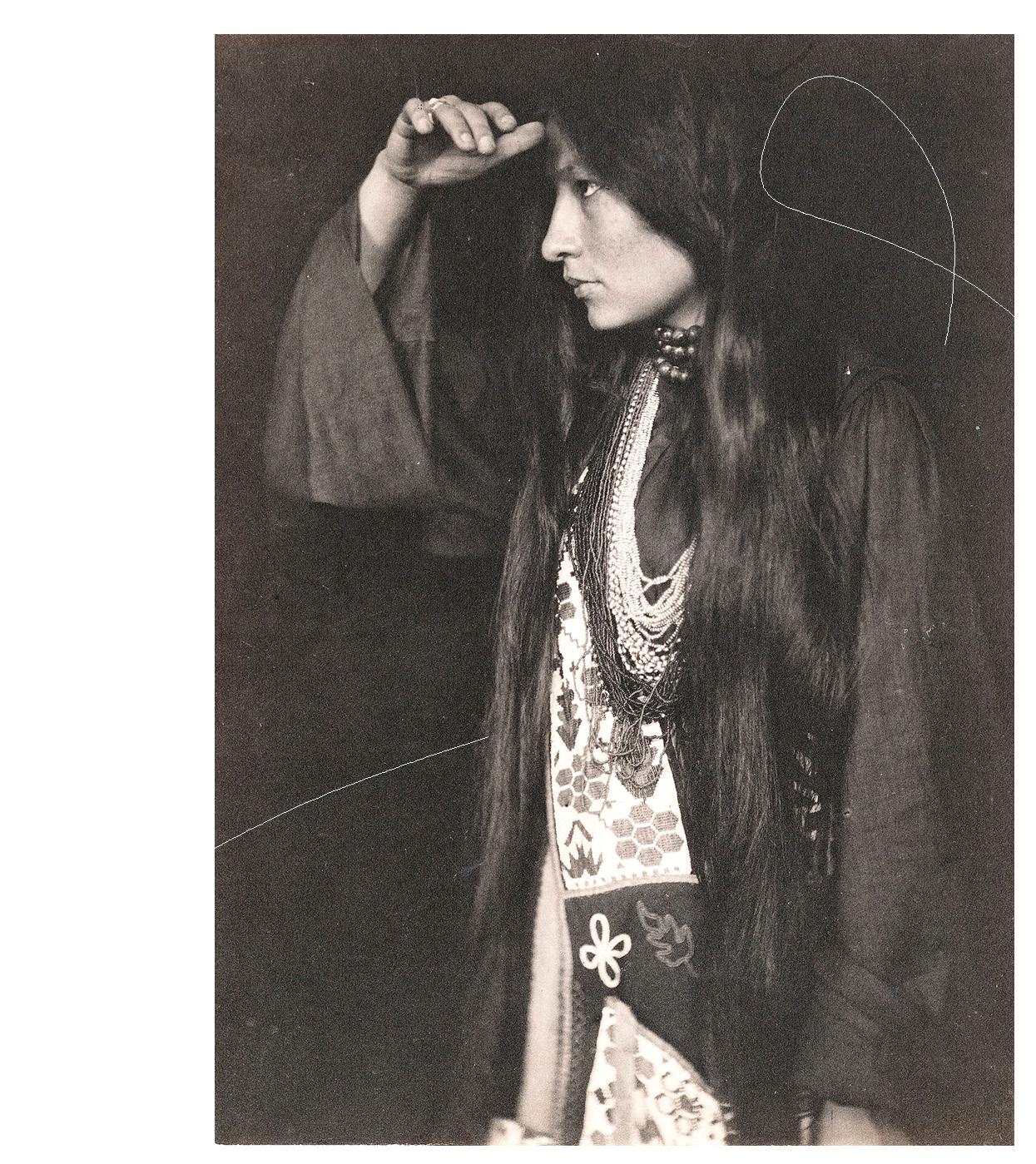
Webster learned more about the Yankton Reservation in South Dakota where Zitkala-Ša was born and how the different schools she attended may have impacted her. Zitkala-Ša studied at multiple other schools including the New England Conservatory of Music.
But what Misti Webster discovered, while researching her University of Utah graduate thesis, is that her musical training and skill as a singer, pianist, and violinist dramatically shaped her life.
“I think people need to know she was a musician first and foremost,” said Webster, who graduated with an MA in Musicology in 2022.
Born in 1876, Zitkala-Ša (also known as Gertrude Simmons Bonnin) began attending White’s Indiana Manual Labor Institute at 8 years old. She was eager to go, believing the school would be in a “more beautiful country than ours,” according to a collection of her personal essays. Her friends were going, too.
But Zitkala-Ša soon discovered her new life was not what she expected.
While it’s unclear what her first instrument was, Webster believes Zitkala-Ša was predominately a violinist — but also a singer and fairly accomplished pianist. She was educated in Western music and taught to play Bach, Chopin, and other major composers in the Western canon.
“When she entered the Western system, it’s assumed any and all musical traditions she knew from her Native background were squashed,” Webster said.
Zitkala-Ša later taught music at the Carlisle Indian Industrial School in Pennsylvania. Founded by Henry Pratt, the school was the first government-run residential school for Native Americans in the nation. These schools, like the one she attended in Indiana, forced students to assimilate into white culture by making them speak English, cutting their hair, and forcing them to abandon their traditions.
Thanks to a College of Fine Arts Graduate Student Research Grant, Webster was able to visit Carlisle and examine the archives.
24 STUDIO / 2023
Sama Zitkala-Ša photographed by Gertrude Käsebier ca. 1898. Photographic History Collection, National Museum of American History, Smithsonian Institution.
“ESSENTIALLY WHAT I ARGUE IN MY THESIS IS SHE USED MUSIC AS A MEANS TO ACCESS SOCIAL OR POLITICAL CIRCLES SHE MIGHT NOT HAVE BEEN ABLE TO ACCESS OTHERWISE.”
“When you actually hold the documents in your hands and … see the photographs of these children, it’s eye opening,” she said, noting that the descendants of some of these children may not even know the photographs and records are there.
Though Zitkala-Ša was loudly critical of the boarding school system, some Indigenous people are similarly critical of her for collaborating with Pratt as an adult. Not only her teaching, but the fact that she toured with him and the Carlisle Band for several months in 1900. She was initially hired as a violin soloist, but Pratt required her to wear traditional Native American clothing borrowed from a museum and to recite the poem “The Song of Hiawatha” by Henry Wadsworth Longfellow.
“There are definitely instances like that where she was put on display, but she still used all these things as some kind of opportunity to get her voice out there and make certain connections,” Webster said.
Zitkala-Ša moved to Fort Duchesne, Utah, in 1902 with her husband Raymond Bonnin, also a survivor of the residential school system. While living there, she met a local white man named William F. Hanson and she collaborated with him on “The Sun Dance Opera,” which premiered in Vernal in 1913. After being performed throughout Utah, it was eventually performed in New York City in 1938.
Much of what is known about the opera is from the letters of Hanson, who went on to teach music at Brigham Young University. Webster visited the BYU archives, but found many questions remain about the extent of Zitkala-Ša’s involvement. That’s not a surprise to Hatter at the University of Utah.
“In the field of history, in general, we tend to like written documents, and composers are the ones who write written documents,” the Associate Professor observed. “I think it doesn’t really matter if she composed or not — she was part of the process — and the process was collaborative.”
If we abandon the “single genius narrative” of composing music and include more kinds of creators, “we’re likely to get a more diverse view of history,” Hatter said.
Zitkala-Ša’s papers at BYU came from Hanson’s representative. It appears some documents did not survive. What exists doesn’t reveal how Zitkala-Ša felt about her musical education and career. But Webster was able to review archives at the New England Conservatory and at Earlham College in Indiana, where Zitkala-Ša was a student from 1895 to 1897. She believes those documents, which show what type of music the Native American woman played, show just how accomplished she was.
“Misti did a great job at finding those details other people had missed by taking Zitkala-Ša’s education seriously,” Hatter said. “I think it’s really important to find those lost voices.”
Webster hopes to continue her research on Zitkala-Ša as a PhD student in musicology next fall. What began as a fascination with someone who used to live in Utah has grown into a research interest with a larger purpose.
“I’ve always striven to amplify voices that aren’t much talked about in musicology,” she said. ■
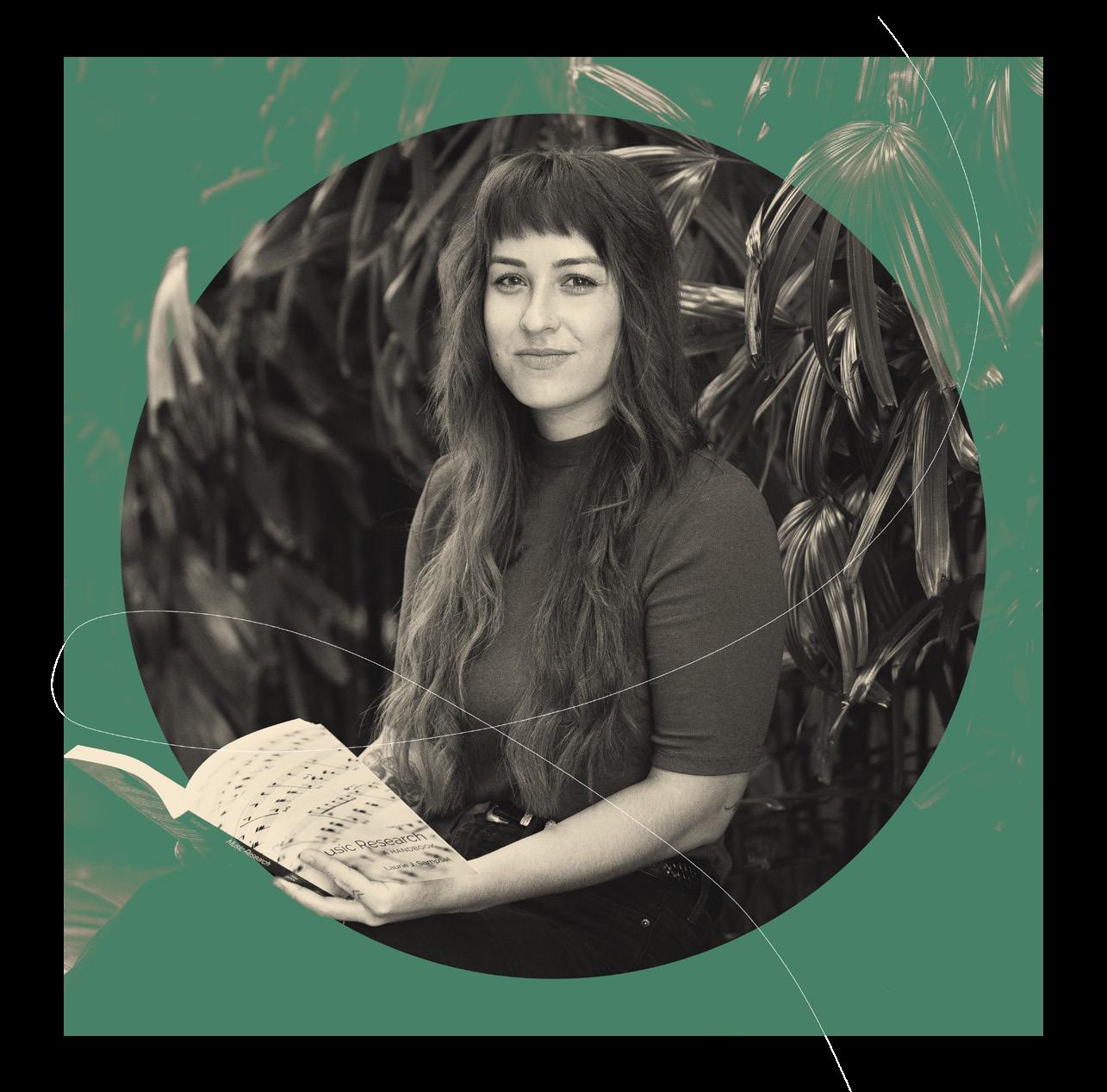
25 STUDIO / 2023
Misti Webster
Photo: University Marketing & Communications
Agility. Self-direction. Stamina. Receptiveness.
To triumph on stage and screen, theatre professionals strive to master these qualities. Each new scene requires performers to drop their expectations and surrender to the moment.
But it’s not just the material that challenges them. The lifestyle of a performer — from seizing sudden opportunities, planning for times of feast and famine, and a schedule that is anything but 9-to-5 is not for the faint of heart. The crowning example of all this: tour life.

Three recent graduates of the University of Utah Department of Theatre’s Musical Theatre Program (MTP) are riding the waves of this unpredictable equation. They are traveling to all corners of the globe as professional performers, and they are having a blast.
Aathaven Tharmarajah (’22)

Starring as Emmett in the national tour of “Legally Blonde” was certainly not a possibility on Aathaven Tharmarajah’s radar when he received his diploma.
The day he graduated, he and five of his U Theatre classmates headed straight to tech rehearsal for Pioneer Theatre Company’s “Hello Dolly” in their caps and gowns. With work lined up with Salt Lake Acting Company as well, he was considering staying local for a while.
But he remembered an agent who had reached out following his MTP Senior Showcase. He followed up and was thrilled to be offered representation immediately. Within a day of signing, he had an audition in NYC for the “Legally Blonde” tour. He went to the callback and on his flight home was offered a principal role.
Five months on the road with only two significant breaks proved to be a grueling undertaking.
“We were only two nights in a city. We would finish a show, sleep in a hotel, and then get on a bus, and drive to the next venue. Traveling was a lot on my body. I learned to prioritize my health. I needed a change of habits to adapt to the tour lifestyle,” he said.
Tharmarajah’s relationships formed on the road made the experience. “My cast members and the people we traveled with made it all worth it.”
Having concluded the tour, he is looking forward to a newly booked contract with an off-Broadway show in NYC. Even though the life of a performer is unpredictable, he is full of hope and excitement.
“I just want to be a working professional. I just want to make theatre that touches people’s hearts.” ■
26 STUDIO / 2023
ON NOW
Sydney Stephan
Photo: Patrick Crean
Aathaven Tharmarajah in “Legally Blonde: the Musical”
Photo: Drager Creative
NOW
Zoe Killian (’21)
Zoe Killian had two weeks after graduation to get to NYC for rehearsals. She had just been cast in the Tokyo tour of “A Chorus Line” with Baayork Lee directing. She could hardly believe the pace of change.

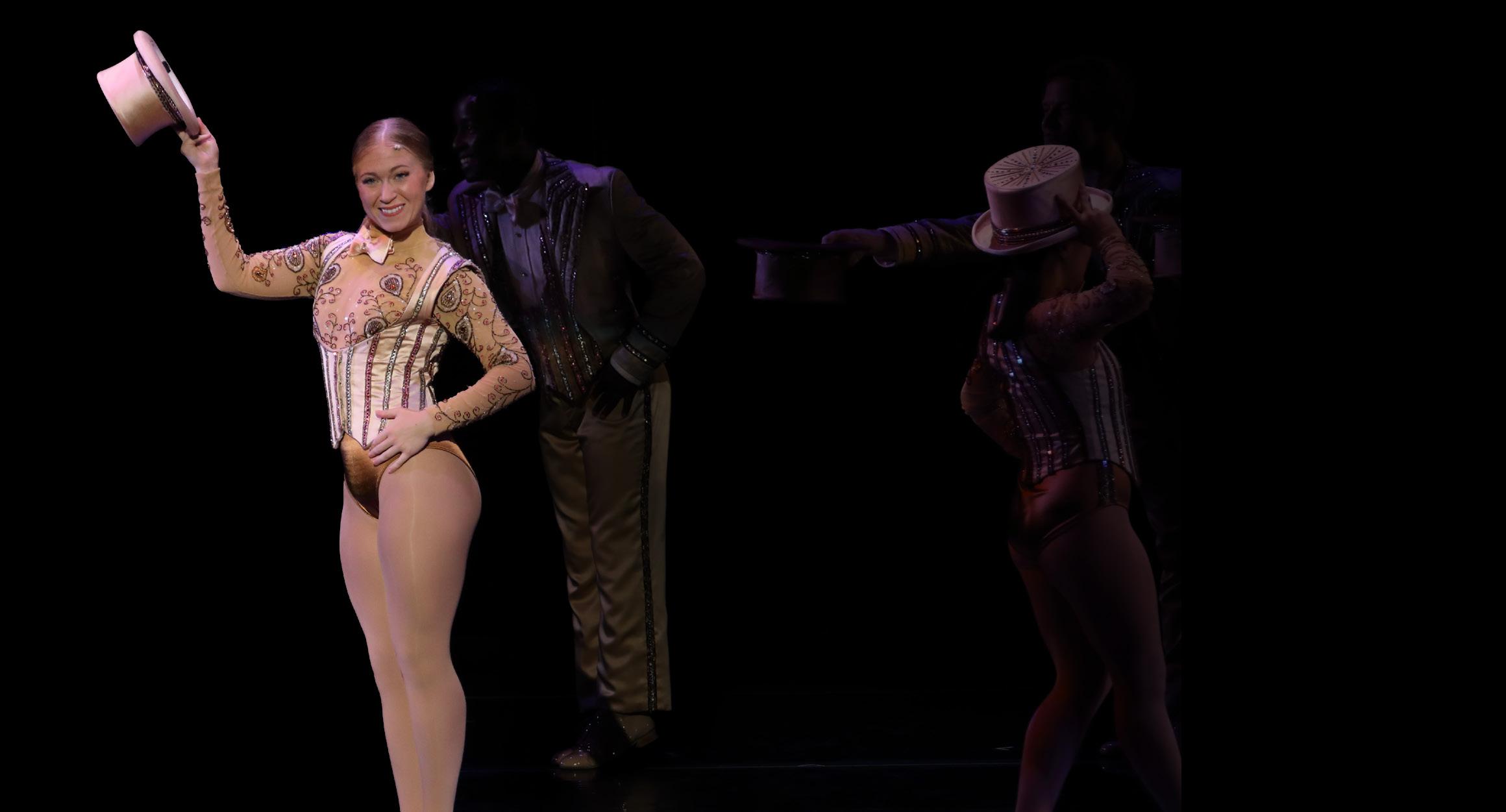
While rehearsing, Lee, who was staging another production of “A Chorus Line” at Pittsburgh Civic Light Opera where one of the actors had dropped out, pulled Killian aside and offered her the role.

After the Pittsburgh contract, she headed to Japan where she performed 10 shows a week.
“I was grateful to be in a new country and experience a new culture. I really enjoy the bonds and relationships with people that I work with,” she said.
Back in NYC and freelancing with Hell’s Kitchen Agency, it wasn’t long before a new opportunity knocked. Just after signing a lease on a new apartment, she booked another tour –– this time with the German and Italian owned AIDA cruise line, where she is now performing in five different shows.
“The U set me up with the tools I needed to do creative processes,” she said. “So much of my journey post-graduation has been about navigating just being a human being, and having to recalibrate what I need when my environment changes so much!” ■
THREE RECENT MUSICAL THEATRE PROGRAM ALUMNI TAKE THE GLOBE BY STORM
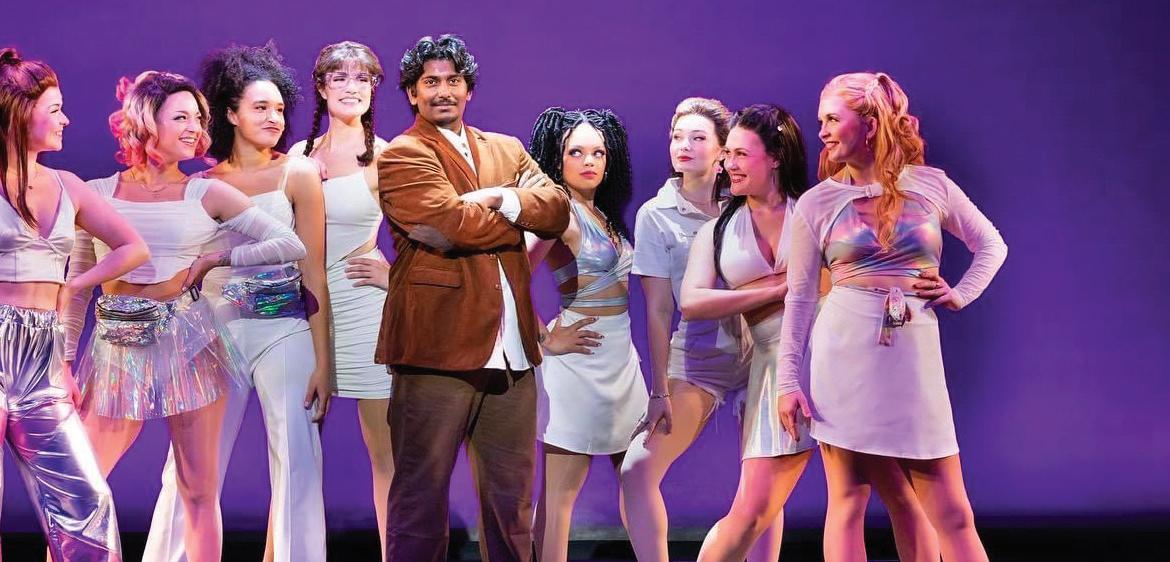
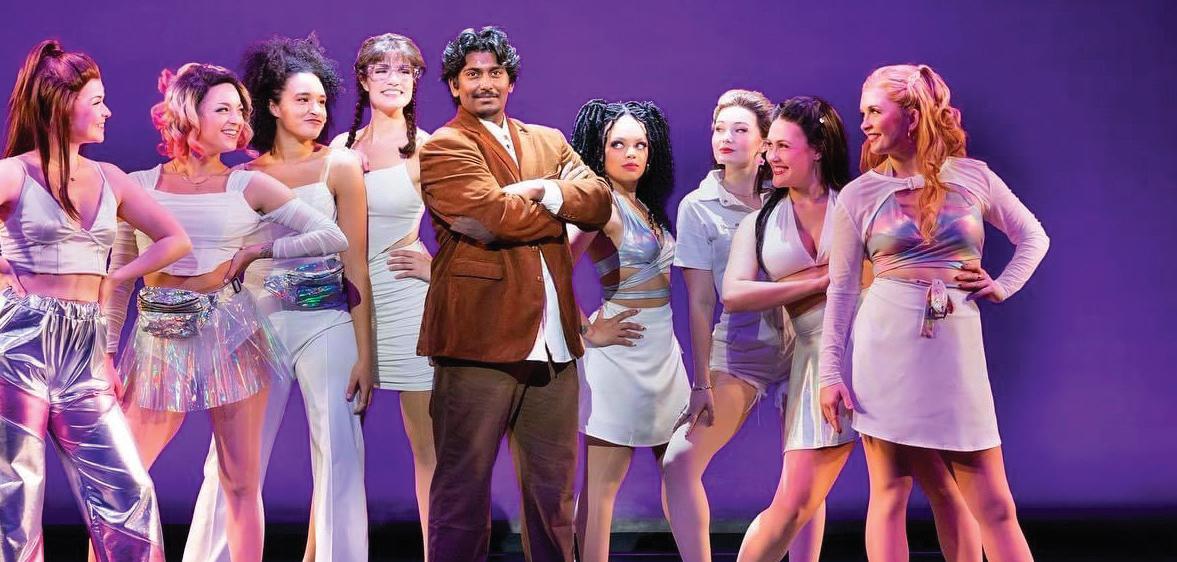
erforming six nights a week on the Holland America cruise line, Sydney Stephan has traveled to Australia, New Zealand, Alaska, the Caribbean, the Mediterranean, the Panama Canal, Bora Bora, and French Polynesia.
P
Right after graduating, Stephan spent a summer with the Virginia City Players in Montana. Thoroughly enjoying this contract, she started to look for the next gig as the season closed.
“I was on Backstage.com and saw a job for a singing pianist on the Holland America line,” she explained. “I grew up playing the piano. I put a reel together and submitted. The next day, someone called me to ask when I could start.”
Having the foresight to pursue new opportunities while finishing up a current run allowed Stephan to avoid a lapse in paid work. It’s a savvy move demonstrating an understanding of the variable nature of her path.
“I went home to my mom’s house in Idaho, unpacked Montana, and repacked cruise suitcase,” she laughed.
U Theatre, she said, prepared her well. “There’s not a day I don’t use the skills I learned in the MTP,” noting things from vocal health to improv. She draws on a solid foundation.
Between ships, Stephan also recently performed a solo concert at Green Room 42 in NYC, where fellow U alums Mary Nikols and Patrick Ryan Castle joined her in backup vocals.
“There’s no through line for the perfect career,” she said. “A lot of young musical theatre performers have an impression that your career is linear –– graduate from school, non-union, equity, equity tour, Broadway. But there are so many pockets of the industry, so many ways to be a performer that might not look exactly like that.”
For now, Holland America is serving her well, and she’s open to whatever comes next.
“It’s so freeing knowing you can find work and be creative and still support yourself… If I can find a way to perform, be creative, continue to grow and support myself, that’s enough for me.” ■
BY EMERI FETZER
27 STUDIO / 2023
Sydney Stephan (’21)
Zoe Killian in A Chorus Line
Photo: Nick Nazzaro
BY MARINA GOMBERG
The tension and resilience that exudes from the bodies of Tennessee-based professional ballet company, Collage Dance Collective, is a most profound thing to witness. Even proximity to this excellence inspires strength in the viewer. The dancers are as powerful in their craft as are their histories and the stories they tell from the stage.
Comprised of all dancers of color, Collage was founded in 2006 by Kevin Thomas and his partner Marcellus Harper, with the intention to inspire the growth and diversity of ballet. The impact is nothing short of stunning.
Thomas had been coming to the University of Utah’s Ballet Summer Intensive (UBSI) for years when Brooke Horejsi, the former Executive Director of UtahPresents, sought to bring the company to
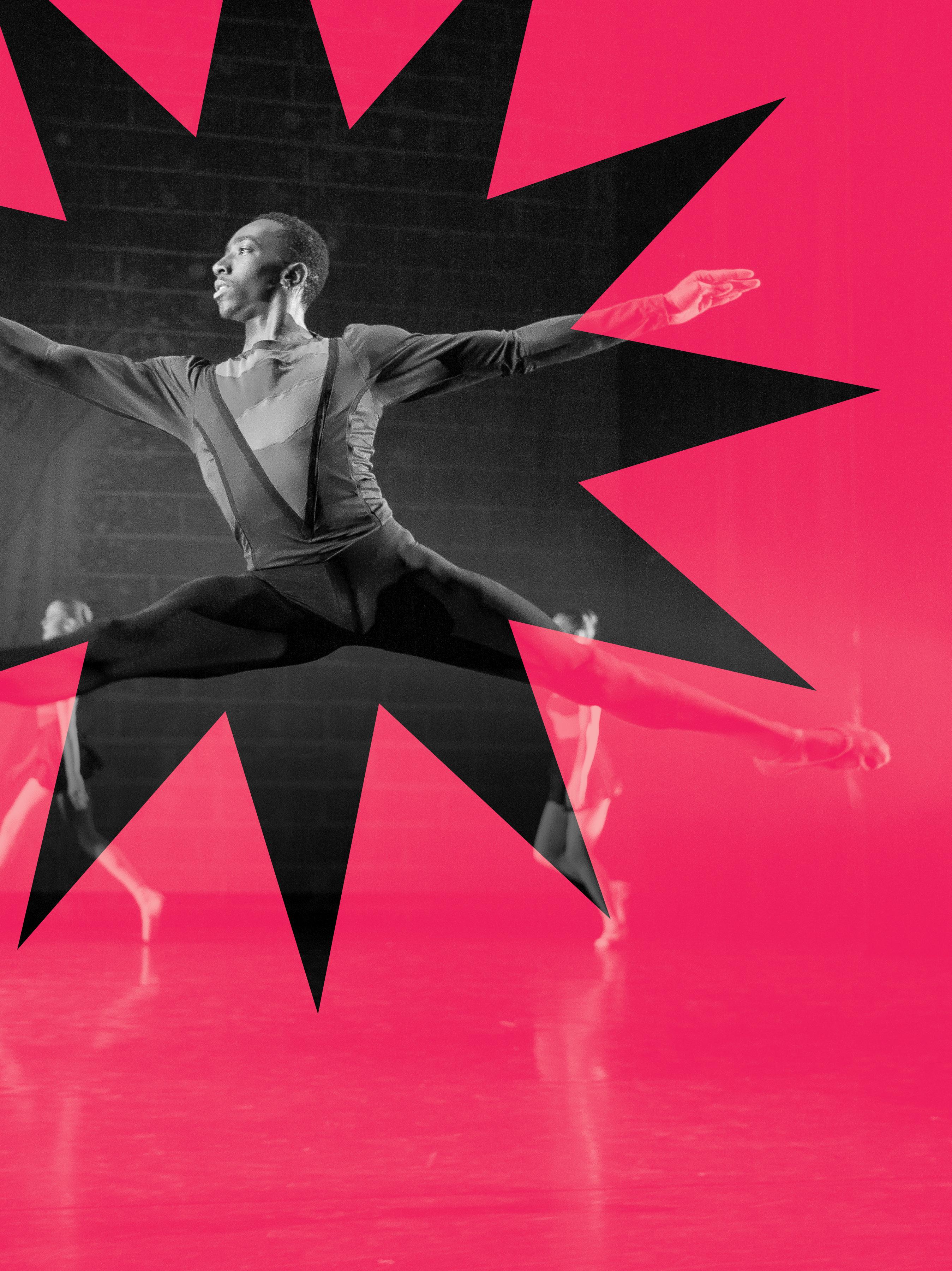 Caio Rodrigo of Collage Dance leaps while portraying Martin Luther King Jr. in the first movement of the iconic work, “Rise”
Photo: Todd Collins
Caio Rodrigo of Collage Dance leaps while portraying Martin Luther King Jr. in the first movement of the iconic work, “Rise”
Photo: Todd Collins
campus for a collaboration between the U’s professional presenting house, the School of Dance, and dance studios in the broader community.
“We want all students to see themselves in our programming,” said Chloe Jones, the current Executive Director of UtahPresents. “We center diversity and cross-campus collaboration in our curatorial process, partly to grow the number of students who can identify and engage with our programming.”
Professor (Lecturer) and Director of UBSI, Maggie Wright Tesch, stepped up to help envision, craft, and fund via an awarded teaching grant, what ultimately became an important partnership that will live on much longer than its time on the stage.
Wright Tesch and her colleagues in the school have been engaging in thoughtful and dedicated work to examine and address issues around equity, diversity, and inclusion in dance.
“This is me walking the walk,” she said, speaking about doing more than just talking about action in this realm. It’s her choreography of change.
After auditions held in early spring of 2023, 16 U School of Dance students and 60 community dancers aged 8 to 18 were cast. The community dancers came from West Point Ballet in Bluffdale, run by ballet alumna Juliana Martin and Bountiful School of Ballet, led by Megan Ware.
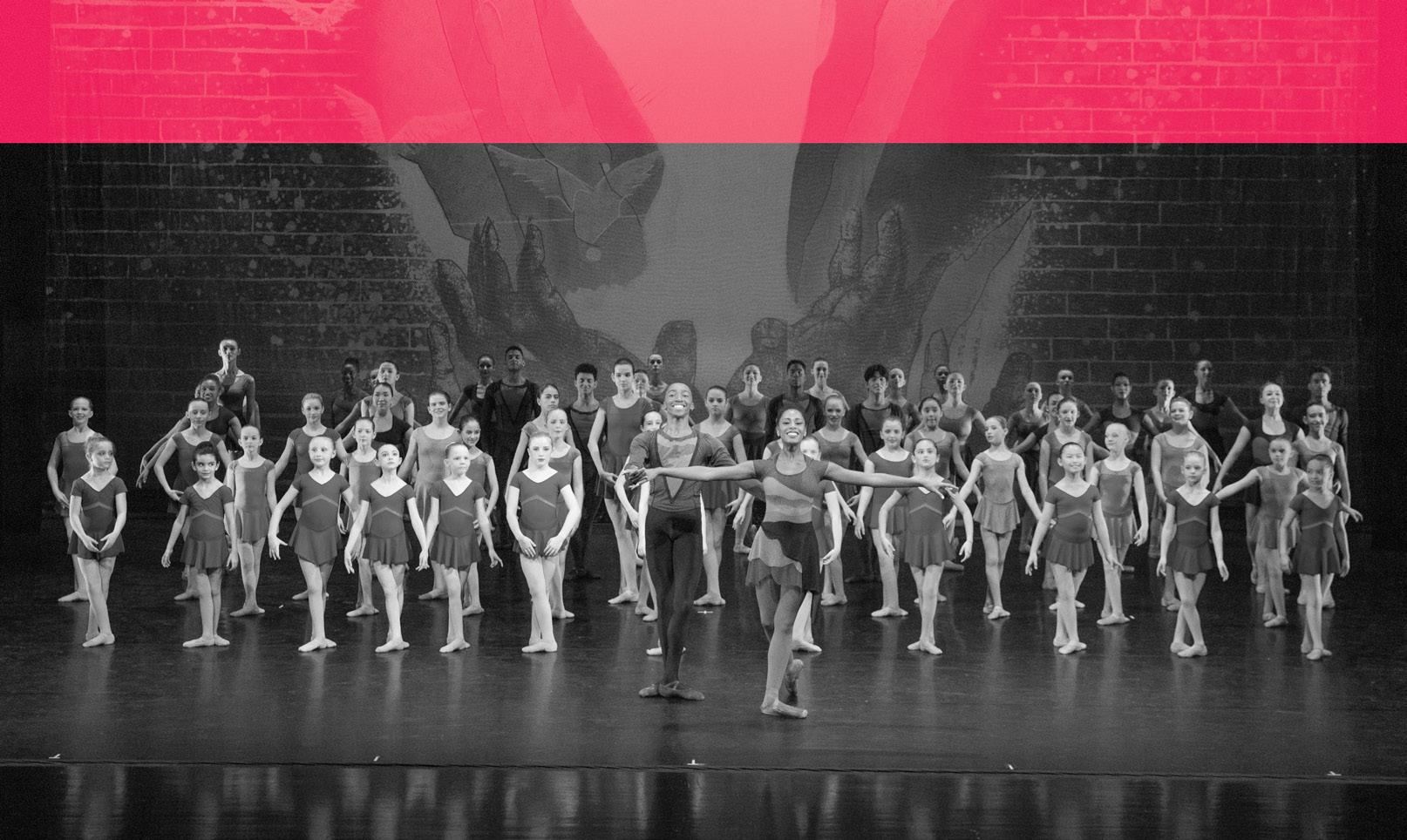
Both Martin and Ware described the professional and societal impacts.
“This collaboration has helped to broaden my dancers’ horizons,” Martin said. “Not only do they get to perform such a unique work, but participating in a professional production like this is an amazing opportunity.”
Ware said, “In a state that is not incredibly diverse, especially in a predominately white suburb, these lessons are so valuable to our children.”
That very representation is the foundational reason Thomas, a former professional ballet dancer, started the company. He grew up not seeing himself reflected from the stage and was denied opportunity because of the color of his skin.
“Little Black boys need to see themselves on the stage,” he said. And that is just the tip of the iceberg of impact Collage, which now includes a conservatory alongside the professional company, and tours the country giving more of us the chance to experience inclusive ballet.
What ultimately manifested here in Utah were public performances in the Marriott Center for Dance — harmonious and dynamic presentations of artistry, meaning, and unity. In addition to the evening shows for the broader community, the project welcomed roughly 600 elementary school students who attended one of UtahPresents student matinees, which are funded, in part, by a ZAP (Zoo, Arts and Parks) grant.
Collage’s most iconic work, “Rise,” was one of the shows’ highlights. It’s a piece beautifully constructed with an original composition by Jonathan Kirkscey and Kirk Smith that combines music with the text of
Rev. Martin Luther King, Jr.’s speech “I’ve Been to the Mountaintop” which he gave April 3, 1968, the day before he was assassinated in Memphis, Tennessee. The piece lands with the most meaningful and welcomed punch. It is a mighty portrayal of perseverance and possibility when we all come together to lift each other up.
Mercedes Stout (15) from West Point Ballet was cast to perform the Letter Solo in “Rise” where she plays a young white girl who had written to MLK, Jr. after he had been stabbed at a book signing in New York City. The girl had heard on the news that if he had even sneezed, he would have died. And she expressed gratitude that he hadn’t.
As a white girl of the same age, Stout felt a sincere connection to her character.
“We stand up for who we are, our rights to fight for freedom, and equality and for everything to be just,” she said. “Being part of this powerful production has opened my mind to see how discriminating people have been against others.”
Annalise Wood, a first-year student in the School of Dance, was also cast in the production. Being able to work with a professional company at such an early stage in her career — especially one that supported and connected with the local dancers with such generosity — was deeply inspiring. As was the content of the work.
“The message of the piece ‘Rise’ to me is that of unification and determination,” Wood said. “Unification of people from around the world, with different backgrounds and histories, in order to challenge the notion of equality.”
Her favorite part was when “a line of about ten women walk on stage holding on to one another, physically unifying and standing together.”
It echoed Thomas’ sentiments when asked how he feels about going to communities where most of the people he’ll work with might not be dancers of color.
He answered swiftly and with such intention: “We can’t move this alone.” ■
29 STUDIO / 2023
“In a state that is not incredibly diverse, especially in a predominately white suburb, these lessons are so valuable to our children.”
Leads Maya Hawkins and Caio Rodrigo from Collage Dance take a bow with the local and national cast of “Rise” performed in Spring 2023 in the Marriott Center for Dance
Photo: Todd Collins
A FORCE TOBE RECKONED WITH
By E m�������������� �������� ��������
It is one thing to perfect one’s craft — a lifelong dedication to practice, growth, and discovery.
Pursuing a professional career in that craft is entirely another beast.
As in any discipline, today’s students seeking work must be equipped with an arsenal of professional skills: from relationshipbuilding, communication, leadership, time management, strategy, and so much more.
Back in 2012, students in the College of Fine Arts (CFA) were already aware of what it was going to take. Their responses to
a survey that year revealed a clear call: they wanted a stronger understanding of the work world, and more confidence in facing the transition out of college.
Associate Dean for Undergraduate Affairs Liz Leckie was brand new to her role at the time but seized the opportunity to dig deeper into what this data illuminated. She went on a listening tour, speaking individually with students to brainstorm possible solutions.
“Initially, we knew that students needed help with networking, entrepreneurship, and the business side of the arts,” Leckie said.
30 STUDIO / 2023
Along with a group of motivated interns, Leckie worked all that summer to plan a 2-day conference that would address these topics head-on and offer a concrete starting place for students to prepare for their futures.
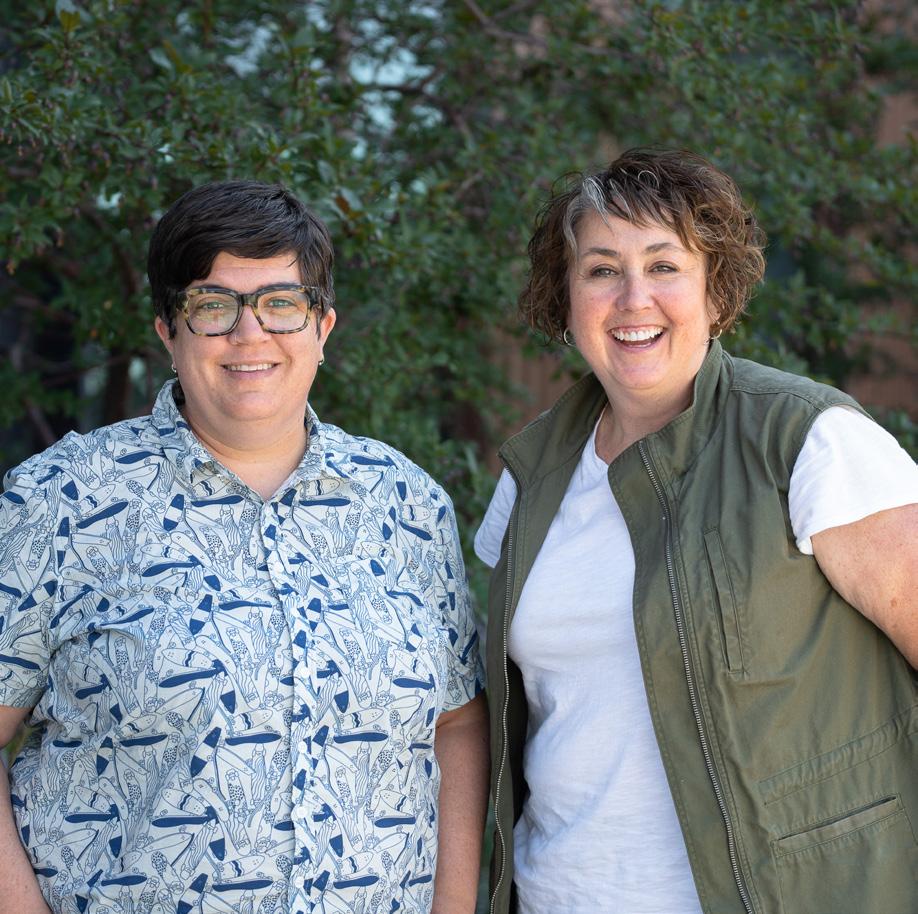
Although resoundingly successful, the conference was just the tip of the iceberg. There was so much more to do.
“One of the things that birthed the ArtsForce program was conducting research on the myths that continue to exist in our society about what you can do with an arts degree,” Leckie explained. “Those myths live everywhere: on and off our campus, in families, in people’s heads. It was about dispelling those myths. If students were going to leave and apply for jobs, they needed to be able to explain: why me –– with this degree, this education, and these opportunities in the context of the arts?”
Since its inception in 2013, the CFA’s ArtsForce program has been serving this need. It bolsters coursework with invaluable professional development resources specifically tailored to the unique framework of the arts. Through the program, students learn to articulate the value of their degree, and prepare for the transition to the working world.
ArtsForce offers diverse programming year-round including regular career treks, where students travel together to local arts organizations and witness firsthand the inner workings of a business and the various positions that support it. ArtsForce Emerging Leaders interns conduct informational interviews with professionals and write articles summarizing major takeaways from their conversations so fellow students can benefit.
A decade later, the conference that started it all is now an annual event where students actively practice networking with folks from all corners of the arts community. The day features panels of professionals (many who are themselves alumni and even past ArtsForce interns!) who share their advice and candidly address burning questions from the crowd.
High-impact practices like these are vital to the success of arts graduates, and there is national data to back it up. The Strategic National Arts Alumni Project (SNAAP) regularly surveys arts alumni nationwide to learn how graduates are using their education and what skills prove most essential in the workforce. Since 2011, alumni of the CFA have been amongst over 200,000 surveyed nationwide.
In conjunction with ArtsForce programming, Internship Coordinator Kate Wolsey supports students in discovering and participating in quality internships that can jumpstart their careers. Since 2018, she also supervises the team of ArtsForce interns.
“In the most recent SNAAP data, we saw over half of fine arts students reported finding internships through their personal networks, and a third of the student internships led to future jobs.” Wolsey said. “If that's what SNAAP is saying, and ArtsForce supports these professional opportunities by teaching students to network with their peers, with their faculty, with people off campus… we're doing the work.”
“We have this national voice that affirms what we've been doing in the college for a decade,” Leckie agreed. “Our data builds out the same way. Our students want the same things, they have the same critiques as those in other institutions. Our students are ready to launch.”
The University of Utah College of Fine Arts was among 120 institutions nationally to participate in the Strategic National Arts Alumni Project (SNAAP) surveying our alumni about their experiences with us. Here are some of the findings.
Compared to all CFA alumni, those who graduated within the last 3 years were:
12
PERCENTAGE POINTS
more likely to have completed an internship, apprenticeship, or other professional work-training relevant to their degree.
9
PERCENTAGE POINTS
more likely to have utilized career services offerings.
The ever-expanding network of thriving alumni who report that ArtsForce was a major game-changer in their trajectories is further proof that the program brings immense value.
“Year after year, the students I see have the most success after graduation are the ones that can really practice talking to professionals and relationshipbuilding,” Wolsey said.
RECKONED WITH
“More and more, we hear students identifying support structures that have encouraged them to study in the arts. That is a hopeful place to be. Instead of asking “what are your challenges?” We're asking them “Where's your support?” Leckie said.
Involvement with the ArtsForce program has also meant a longer lasting relationship with the College for many alumni. Former interns serve on the Fine Arts Ambassadors, the CFA’s alumni board, participate in networking panels, and advocate for the CFA on community boards and within their organizations.
“We have offered a lot of individual mentorship, and that's hard to find,” Wolsey said. “As an undergrad, I didn't have mentors. Whenever I work with a student, I am a cheerleader for life. Maybe the way those connections stay alive is that we cheer for them as much as they continue to pay attention and support our roles.”
“ArtsForce doesn’t specifically define one pathway to success, which gives me a lot of hope,” Leckie reflected. “It destigmatizes everything they may have heard about why they can’t do it. Through ArtsForce, they see people who have succeeded and proved the myths wrong.” ■
91%
reported the U helped them acquire or develop creative thinking and problem-solving skills. reported the U helped them develop artistic technique. reported the U helped them to adapt to changing circumstances
91% 88%
After earning their arts degree:
84%
of alumni took less than a year to find a job or pursued further education.
31 STUDIO / 2023
Of alumni who graduated within the last 3 years:
Photo: University Marketing & Communications
Associate Dean for Undergraduate Student Affairs, Liz Leckie (right), with CFA Internship Coordinator, Kate Wolsey (left)
By Julia Lyon
How Educators Are Creating Art and Building Community in New Ways
As the University of Utah broadens its reach throughout the state, Arts Education faculty are inspiring more students to see themselves on campus — and showing them where studying the arts could lead. Whether it’s working with high school students in Tooele County or Native American youth on campus, educators are connecting with students in new and unprecedented ways.
“Arts Education is the bridge to engaging young people, families, and communities to all the University of Utah has to offer,” said Kelby McIntyreMartinez, the Associate Dean for Arts Education & Community Engagement.
 First annual Stansbury Island Art Fair held on Stansbury Island in April of 2021
Photo: Eric Robertson
First annual Stansbury Island Art Fair held on Stansbury Island in April of 2021
Photo: Eric Robertson
For some, an Arts Education degree can be a step toward a successful teaching career. For others, studying the arts is a way to broaden their education and discover their creative potential.
Some students may be newcomers to this country. Some may be from families who have lived here for generations. Either way, McIntyre-Martinez believes the message is the same:
“Arts Education is a pathway to higher education.” ■
For the last three years, alumnus and Assistant Professor Joshua Graham and his Art in the Community students have made art outside, with kids from Stansbury High School.
But this isn’t the U students swooping in and out of Tooele County. It’s a months-long collaboration, culminating in a special kind of art fair: a day of artmaking — together — on Stansbury Island.
“It’s this area that’s only 40 miles away, but feels like you’re on a different planet,” said Graham. “And it happens to be in the backyard of all of the students at Stansbury High School.”
During the all-day event, Graham’s students and the high schoolers meet on public land to talk about art and environmental issues. They use clay sourced from the island and other natural objects to play and create. When they’re done, much of the art is left in place, because it is made from natural materials.
“The lasting art is the social sculpture we create, the conversations, the dialogue, the art making, the laughter,” Graham said. “All of that action is, in a sense, the work.”
A major goal is to strengthen communities and learn from each other through making art — not to mention exposing these teenagers to the U.
Leading up to the art fair, the two groups of students communicate and share ideas. Not all of Graham’s students are art majors, but — whatever their background — they work together to design curriculum for the workshop.
“I’m interested in experiential curriculum that encourages students to interact with their local communities and environments,” Graham said.
This spring was the final year Graham’s students worked with Stansbury High School. Who the students will work with next remains a question. But they will start collaborating with a new community partner and making art together, somewhere in Utah, in the spring of 2024. ■
For the past two decades, ArtsBridge focused on bringing arts education to kids on the west side of the Salt Lake Valley — the kids whose opportunity to make and perform art had been dramatically decreased by budget cuts.
But as funding for the arts has increased thanks to the Beverley Taylor Sorenson Arts Learning Program, ArtsBridge, a program committed to bringing the arts to schools with limited resources, has begun connecting with youth further from campus.
“The places we’re looking to are places that don’t have that extra arts infusion from state funds yet,” said Kerri Hopkins, the ArtsBridge Director. “We’re trying to find other ways to connect with communities that might feel more distanced from the U.”
In the summer of 2022, ArtsBridge worked with Native American students to create murals while the junior and high school students were on campus for the annual Ute Storytelling Camp.

ArtsBridge was a new addition to the long-running festival, but Hopkins would like to see the partnership continue. Two undergraduate arts teaching majors and one undergraduate film teaching major, supervised by Hopkins, helped the youth learn more about painting and art production.
“It gave them a chance to learn a little bit about the art form, but also a chance to express their ideas, have their voices heard and their artwork seen,” she said.
The U students talked with the youth about how to generate ideas — ideas that are important to them — and how to work together to create community art.
The project led to three murals, one of which remains on display at the J. Willard Marriott Library on campus.
ArtsBridge hopes to bring more arts projects to schools on reservations in Utah, bringing more undergraduate and graduate students to work with youth. The program is also expanding in other parts of the state, including the Tooele Valley.
“This is a great opportunity for the U to serve a need, to give back, and to give our students valuable experience with community engagement and arts education,” Hopkins said. “They get the chance to learn from the youth they teach.”
Ultimately, ArtsBridge hopes to teach kids that the arts are a way to connect.
“Everyone has something to share … whatever art form it might be, wherever they might be in the state,” she said. ■

“The lasting art is the social sculpture we create, the conversations, the dialogue, the art making, the laughter. All of that action is, in a sense, the work.”
– JOSH GRAHAM
Photo: Kerri Hopkins
Photo: Kerri Hopkins
Mural detail
Students collaborate on their mural during Storytelling Camp
Guest Artists & Scholars
University of Utah College of Fine Arts, students learn

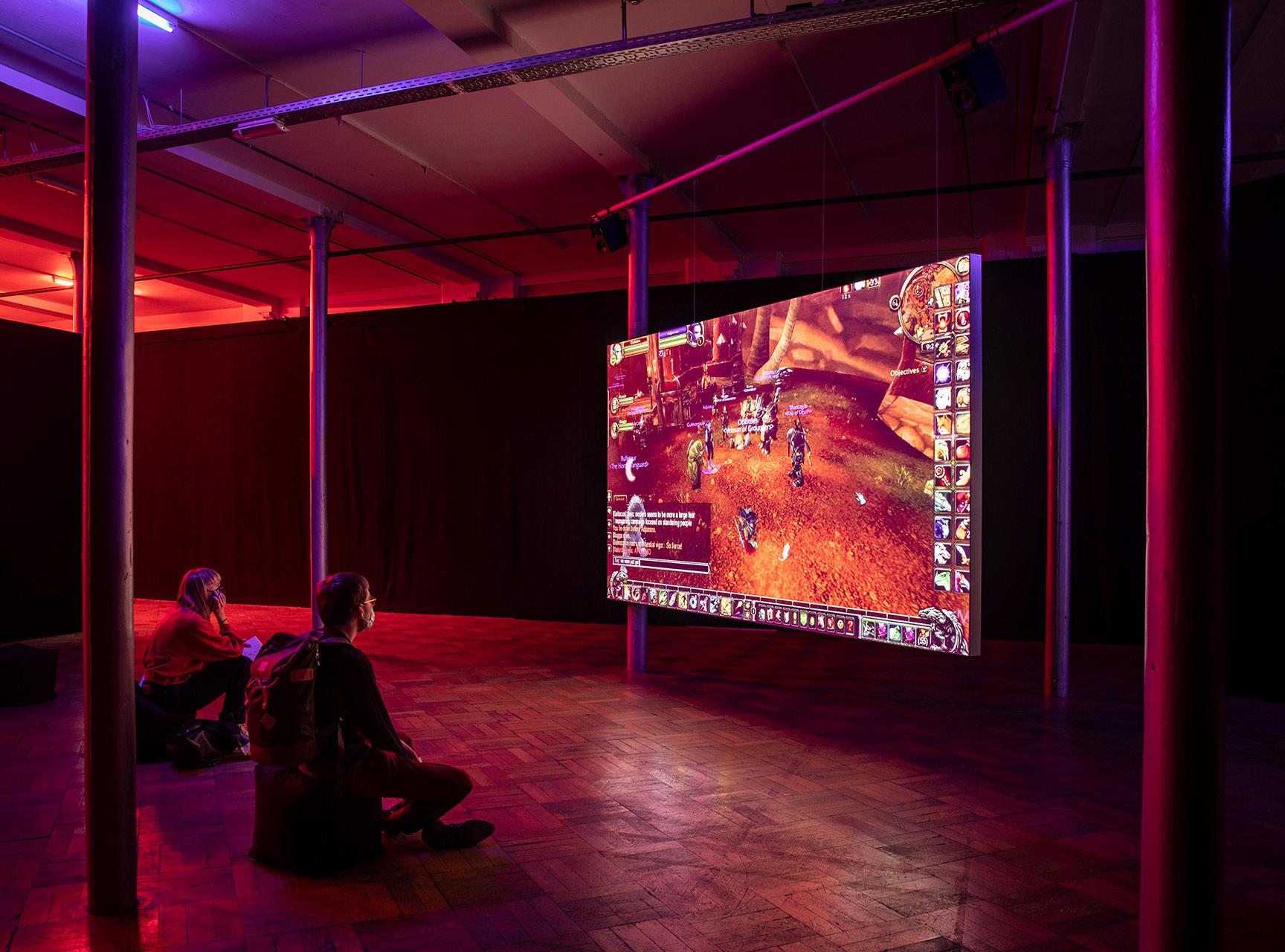
of
is not
each academic unit brings to campus world-renowned artists who offer master classes, give public lectures, screen films, host discussions, and ultimately deepen exploration into all areas of study. During the past year alone, these artists shared their knowledge and expertise with us.
Art & Art History
Stephan Berkman • Leo Espinosa • Wuon-Gean Ho • Shiva Nallaperumal Peter Pinnell • Emily Scott • Angela Washko
—
Angela Washko is an artist who creates new forums for discussions about feminism in spaces frequently hostile toward it. Her practice spans interventions in virtual environments, performance art, media installation, documentary film, and video games. A recipient of the Creative Capital Award, Impact Award at Indiecade, and the Franklin Furnace Performance Fund, Washko’s practice has been highlighted in The New Yorker, Frieze Magazine, Time Magazine, The Guardian, ArtForum, The Los Angeles Times, Art in America, The New York Times, and more. Her projects have been presented internationally at venues including Museum of the Moving Image, Los Angeles Museum of Contemporary Art, the Milan Design Triennale, and the Shenzhen Independent Animation Biennial. Angela Washko is an Associate Professor of Art at Carnegie Mellon University.
Theatre
Christopher Anaya-Gorman • Devin Rey Barney • Eric Bean Jr. • Trina Bellinger
Lilan Bowden • Ashley Bryant Miller • Madazon Can-Can • Mark David Christiansen
Kory Edgewood • Ruth Eitemiller • Claybourne Elder • Cynthia Fleming • Frantic Assembly
Amber Friendly • Tia Galanis • Mindy Gunderson • Robert Horn • David Knoell • Madison
Lindgren • Kathleen Marshall • Marie Otto • Jeremy Rishe • Michael Rodriguez
Scott Savage • KatyBeth Schmid • Jennifer Sears-Scheier • Sequoia
Matthew Sorensen • Andre Ward • Scott Wojcik • Veronica Yeager —
Matthew Sorensen (Puppetry Mentor) is a puppeteer, theater artist, filmmaker, educator, and museum exhibition designer based in Connecticut and New York. He is currently serving as Interim Co-Director of the Ballard Institute and Museum of Puppetry at the University of Connecticut. He is also an adjunct faculty member for the Dramatic Arts program at UConn and the Performing Arts Design Program at the University of Utah. Matt was delighted to return to SLC after having worked as the Puppet Designer/Fabricator on the U’s 2019 production of “She Kills Monsters” (Kingsbury Hall). While finishing his studies for his MFA in Puppet Arts from UConn, Matt formed a production company, Puppet Bucket Productions, and has designed and built puppets for theater and film around the world.
34 STUDIO
/ 2023
At the
from some
the top faculty in the country. But that
all; each semester,
Dance
Lauren Anderson • Alex Barbier
Thomas DeFrantz
Petra Kuppers
• Rena Butler
• Michele Gifford
• Cherylyn Lavagnino
• Lauren Curly
• Suzanne Haag
• Amy Miller
Kevin Thomas & Collage Dance Collective
• Dance Aspen
• Raja Feather
• Kelly Kirsten Kemp
• Ursula Perry • Linda Smith
• Versa-Style • Whyteberg
Rena Butler hails from Chicago, IL. She began her studies at The Chicago Academy for the Arts, studied overseas at Taipei National University of the Arts in Taiwan, and received her BFA from SUNY Purchase Conservatory of Dance. Rena danced with companies including Hubbard Street Dance Chicago (also a choreographic fellow), AIM by Kyle Abraham, Bill T. Jones/Arnie Zane Company, David Dorfman Dance, Manuel Vignoulle/ M-Motions, The Kevin Wynn Collection, Pasos Con Sabor Salsa Dance Company, among many others. She most recently danced with Gibney Company and was their inaugural Choreographic Associate. Rena joined the School of Dance for a one-week residency in early 2023, taught masterclasses, and created a new work on students that was performed in the final mainstage concert of the year.
Air Force Academy Band - Academy Winds
Geoffrey Burleson
• Esther Ahn Maria Briggs
• Matthew Burns • Cantare Brass Quintet
Curbelo Piano Duo • David Binney Quartet
Brandon Jones • David Kalhous
Mirari Brass Quintet
Ari Pelto
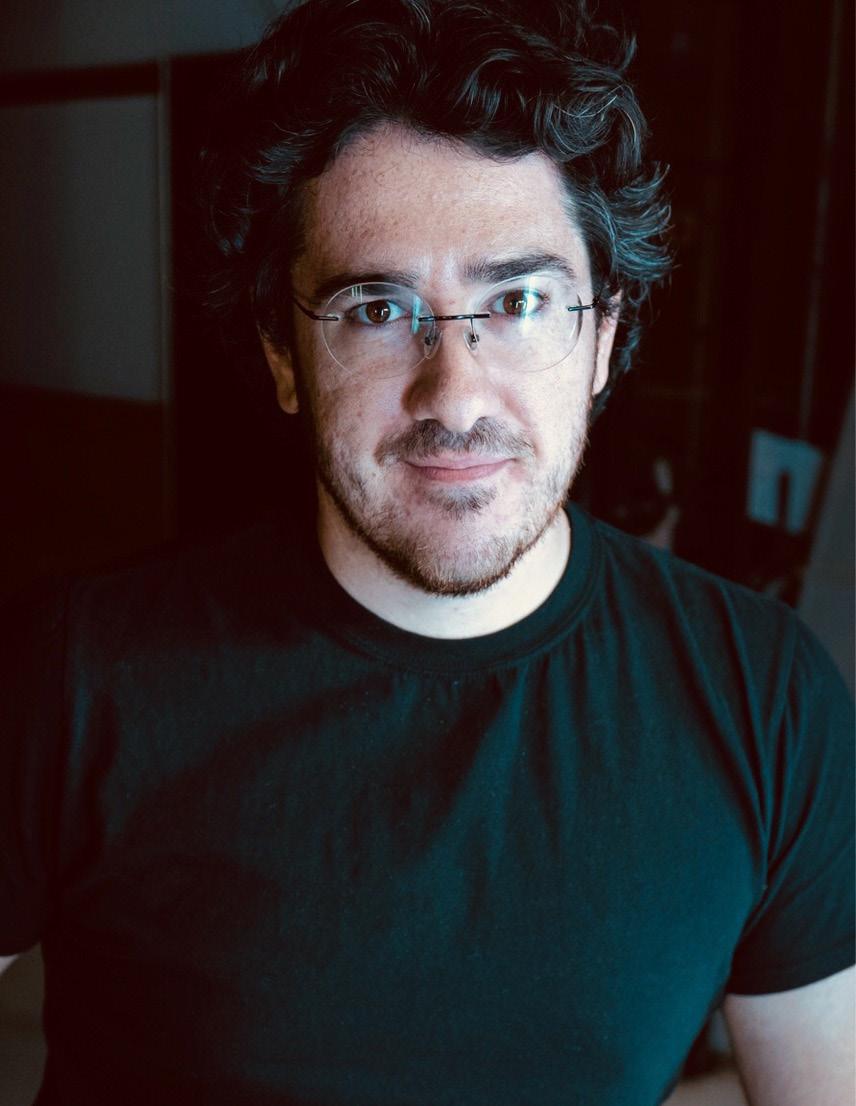
Music
• James Brinkmann
• Alvin Chow
• Joseph Colaneri
• Stefan Dohr • Finkel-Han Duo • Yoonie Han
• Fred Lerdahl • Shazia Manzoor
• Christopher O’Riley • Emmanuel Pahud
• Augusta Reed
Cahill Smith
• Jeremy Reynolds
• Detlef Sölter
• Hanna Martineau
• Bradley Palmer and Justin Cook
• Aquim Sacramento
• Robert Tweten
• Richard Sherman
• United States Navy Band
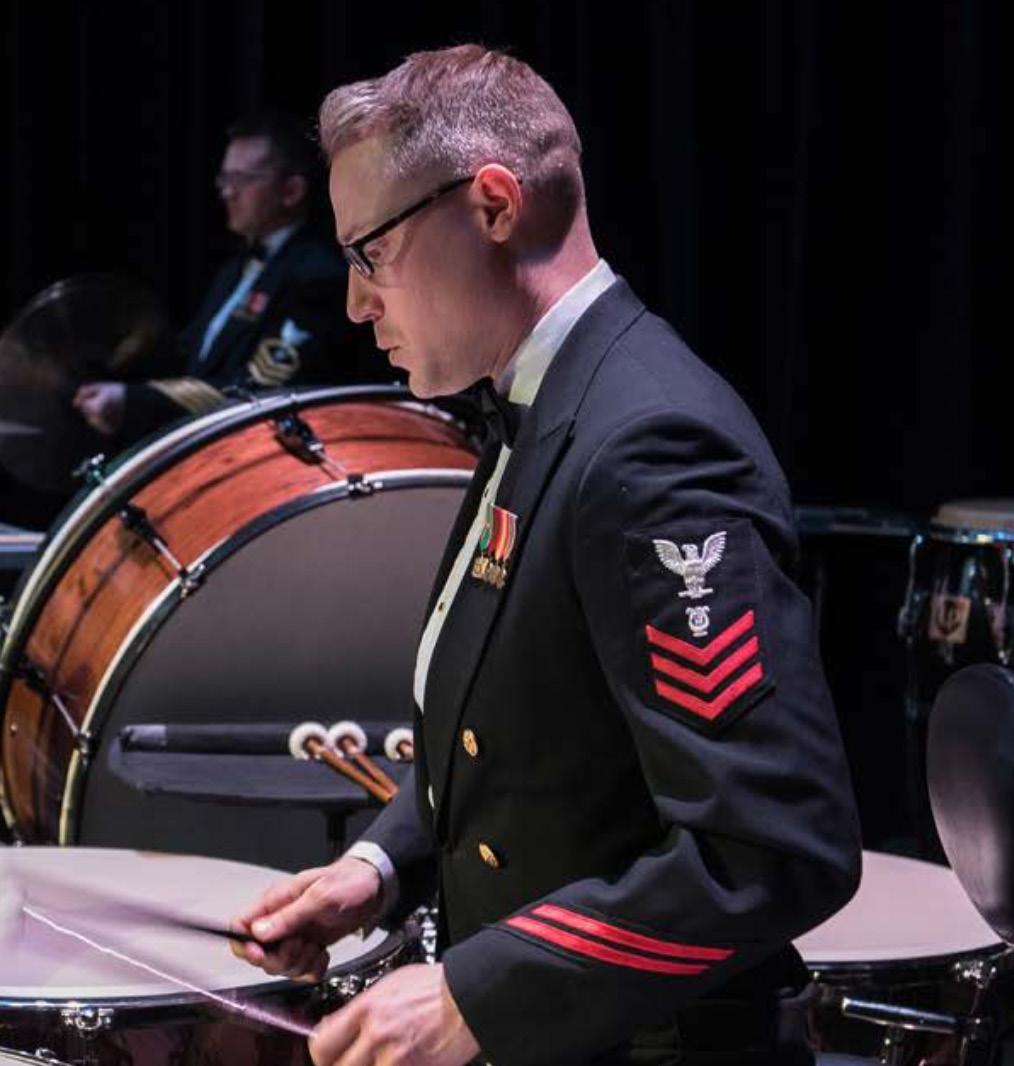
The United States Navy Band is the premier musical organization of the U.S. Navy. Since its inception in 1925, the Navy Band has been entertaining audiences and supporting the Navy with some of the best musicians in the country. From national concert tours to presidential inaugurals to memorial services at Arlington National Cemetery, the Navy Band proudly represents the men and women of the largest, most versatile, most capable naval force on the planet today: America’s Navy. One hundred seventy enlisted musicians, recruited from the finest music schools and professional musical organizations, perform over 270 public concerts and 1,300 ceremonies each year.
Film & Media Arts
Julian Acosta • Stephen Berkman • Katerina Eichenberger • Anayat Fakhraie
Andrew Hunter • Joseph O’driscal • Ryan Powell • Daniel Timmons • Sean Valdivieso
A graduate of the Department of Film & Media Arts, Anayat has written episodes of “Gaslit” starring Julia Roberts and Sean Penn and the forthcoming series “Orphan Black: Echoes.” He spent six years on the production team for HBO’s “Real Time with Bill Maher.”
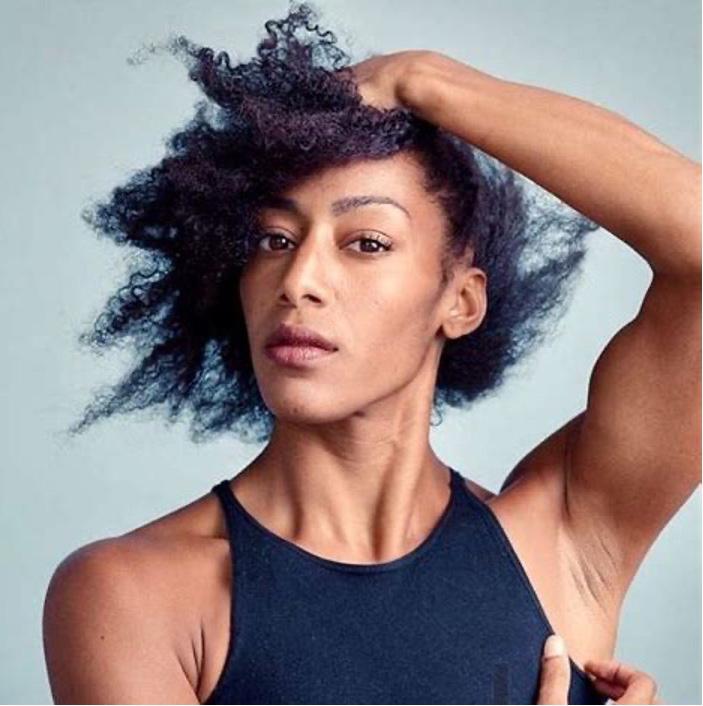
35 STUDIO / 2023
John & Marcia Price


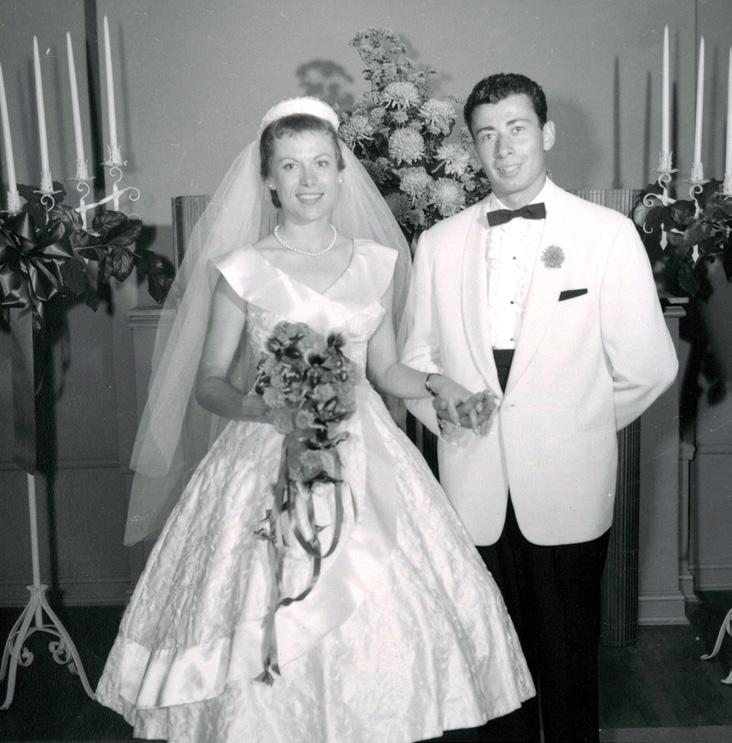
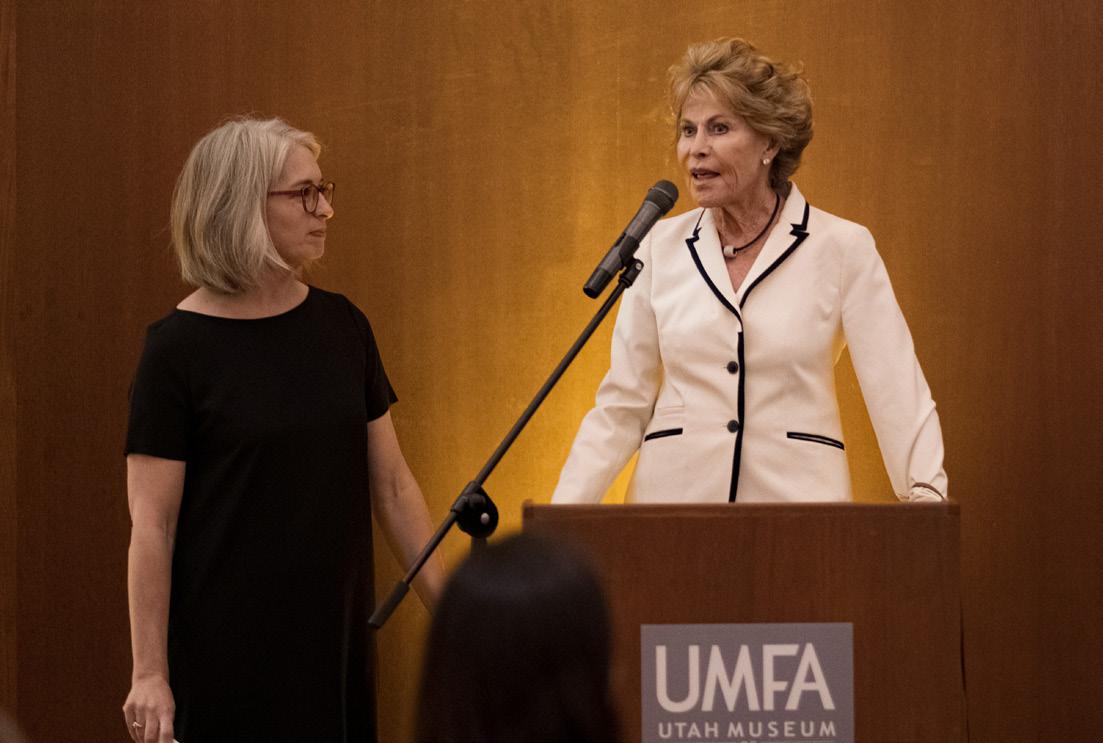
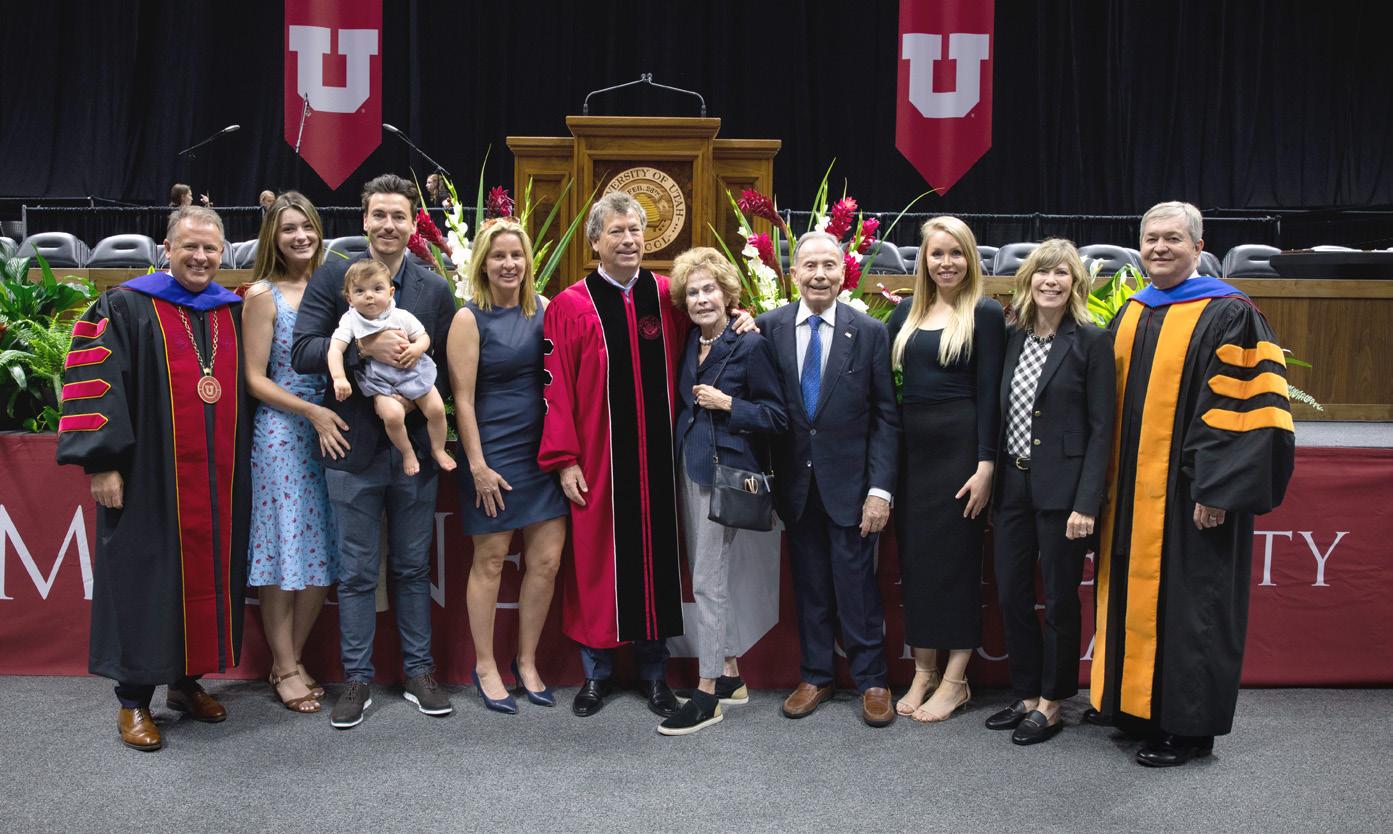

 By Emeri Fetzer
By Emeri Fetzer

36 STUDIO / 2023
Re:Generation
Step into the new John and Marcia Price Theatre Arts Building today and you will hear singing in the halls. While warming up for class, student performers and designers chat about upcoming performances and dream up new collaborations. Faculty passing through give an extra note or tell students about a local show.
In PTAB, as it is lovingly called, the U Theatre community is set up for success. Equipped with spacious studios, modern design labs, and well-appointed costume and prop shops, this place is built specifically so theatre, and those who pursue its study, can thrive.
It wasn’t always this way. Just a few years ago, Department of Theatre classes were spread across several far-flung buildings, often in retrofitted rooms that weren’t quite right for rehearsal or design. Students and faculty trekked from space to space, making it work –– as is the artist’s way.
As John and Marcia Price and their family could see, this was a situation ripe for an upgrade. If the arts are to truly flourish on campus, they must have spaces that not only serve changing student needs but invite the public to join the party.
Building 73, once the home of the law school, “had good bones,” John Price recalled. Its low profile and mid-century style were worth preserving. With a lifetime of expertise in real estate development, John knew that the right upgrades and touches would give it new life. In 2019, their landmark $3.5M gift made the dream real, ushering in a new era for the performing arts at the U.
For the family, the building also carries personal significance. Both U alumni, John and Marcia first met at a Spudnut shop (now Osteria Amore) on 1300 East just a block away. Their son Steven was born at 268 University, just across the street. “Converting the building for the arts brought back memories of where we started, and where we are finishing,” John Price said. “Whenever we look at it now, we remember the beginning of our marriage and family.”
Throughout the Price’s legacy of innumerable contributions including service to community organizations, arts and education have remained top priorities. A love for the arts stems from early memories and is central to their family culture.
John Price was just a young boy when his family fled Nazi Germany. “Of the things my father hurriedly packed were paintings,” he said. “He took them out of the frames and rolled them up in scrolls to take with us as we escaped. For my mother, it was antique crystal and candleholders — things that had more of an intrinsic value than monetary value.” Many of these precious items are still displayed in their home.
Price ended up at the University of Utah after a summer field course while studying engineering and geology at City College in New York, where his family had ultimately settled. Falling in love with the mountains, he decided to stay. Deeply focused on being economically
stable, his aim was to finish his degree as quickly as possible and begin earning a good living.
Serendipitously, while practicing with the wrestling team in a gymnasium space shared with modern dancers, he was approached by Shirley Ririe and Joan Woodbury who convinced him to be a lifter for their dances. This, he says, was his introduction to the arts at the U. “It became a very pleasing recreation for my structured mind of work. We developed a lifelong friendship, and we have supported Ririe-Woodbury [professional dance company] for years.”
Marcia Price built her life around beauty, creativity, and “the universal language of art.” As a young girl drawn to paintings, music, and dance, she has taken every opportunity to serve the arts in her beloved home state. Marcia’s board service includes Utah Symphony | Utah Opera, University of Utah College of Fine Arts, the National Committee for the Performing Arts at the Kennedy Center, and the National Foundation for the Advancement in the Arts. As Chair of the Utah Arts Council, she worked tirelessly to establish the ZAP (Zoo, Arts & Parks) tax that sustains Utah’s cultural organizations.
Perhaps one of her deepest connections is with the Utah Museum of Fine Arts, where she is currently board chair. In 2001, John and Marcia were forefront in the completion of the award-winning Marcia and John Price Museum Building. Most recently, they established an endowment supporting the UMFA’s executive director role.
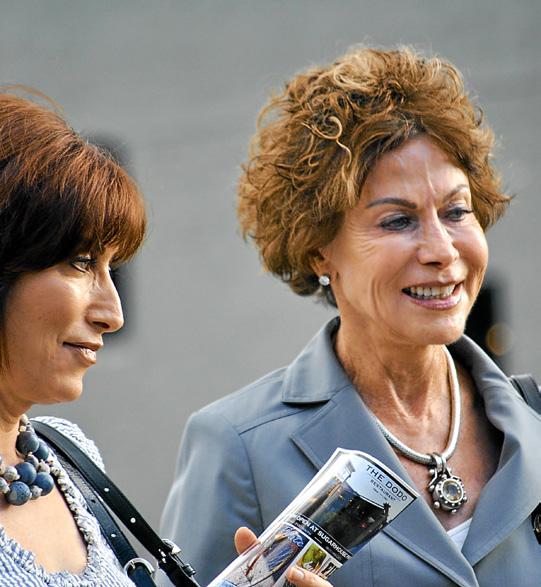
Steven, Deirdra, and Jennifer, John and Marcia’s children, are continuing their parents’ legacy through their own community service and leadership.
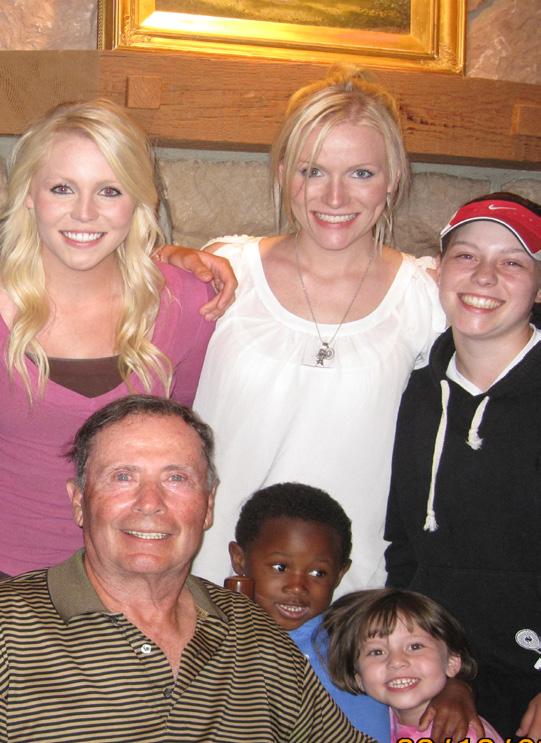
“Growing up, the culture in our family was to give back, keep it local, and do it while you are here,” said Jennifer Price-Wallin, who is herself former chair of the College of Fine Arts Advisory Board.
Deirdra Price echoed, “We were always surrounded by art. You develop into a culture of not just wanting to collect or view it but be a participant. It’s always been in the ether of our household. You should give back your time and resources to help the organizations you love be the best they can be.”
The University of Utah is fortunately one of the organizations the Price family loves. Steven Price, founder and president of Price Real Estate and U trustee, consistently advocates for more space for art on campus, giving the public abundant opportunities for connection. “To make our city livable, we need art in the public space. We need art everywhere,” he explained. “Arts are the ultimate state of who and what we are as humanity.”
The Price Theatre Arts Building, and its lovely new adjacent outdoor amphitheater, illuminate their stalwart commitment to this promise.
“You can’t have too many facilities, and you can’t have too much art,” Marcia Price emphasized. “This is just one more way to add to the wonder and beauty of education, the University, and the State.” ▪
37 STUDIO / 2023
(Top) President Taylor Randall and Dean John Scheib unveil portrait of John and Marcia Price
Photo: Jeff Bagley
Other photos: Images courtesy Price family
Guest Artist Thank You
Connoisseur $25,000 +
Anonymous
Sandi Behnken
Kenneth P. and Sally Rich Burbidge Foundation I
Dick and Timmy Burton Foundation
Community Foundation of Utah
Lawrence T. and Janet T. Dee Foundation
Deseret Trust Company
Kem C. and Carolyn B. Gardner
Ralph and Rosie* Gochnour
Kent and Martha DiFiore
Huntsman Foundation
Janet Q. Lawson Foundation
Meldrum Foundation
James R. Michie and Judith C. Condie
Anne G. Osborn
John and Marcia Price Family Foundation
S. J. & Jessie E. Quinney Foundation
John and Gayle Froerer Richards
Neal and Sherrie Savage Family
Beverley Taylor Sorenson Foundation
The Dean and Bonnie Stephen Charitable Trust
Jack and Mary Lois Wheatley Family Foundation
Aficionado $10,000–$24,999
Adrienne Arsht
ArtWorks for Kids
Barbara Bannon*
Klea Blackhurst
Edward L. Burton Foundation
Marjorie and Francis* Gunn
Lynn and Mary Hales
Gordon L. and Connie R. Hanks
Lee A. and Audrey M. Hollaar
Nancy P. and Richard E. Marriott
Roger H. and Colleen K. Thompson Foundation
W. Mack & Julia S. Watkins Foundation Trust
Benefactor $5,000–$9,999
M. Lynn Bennion Foundation
The E. J. Bird Foundation
Kenneth J. and Kristina F. Burton
Genevieve Christianson and Shane Larson
George S. and Dolores Doré Eccles Foundation
Robert and Mary D. Gilchrist
Emma Eccles Jones Foundation
Fred Lampropoulos and Anne-Marie Wright Lampropoulos
Nancy Peery Marriott Foundation
Merit Medical Systems, Inc.
Salt Lake City Arts Council Foundation
Salty Pictures
Joanne L. Shrontz Family Foundation
Marcus G. and Constance R. Theodore
Patron $2,500–$4,999
American Endowment Foundation
John and Elizabeth Bennion
The Rodney Brady Family foundation
Kenneth P. and Sally Rich Burbidge Foundation II
Susan Burke
R. Harold Burton Foundation
Lisa Chaufty and Miguel Chuaqui
Classic Harps Northwest
If you’re interested in supporting the work of the College of Fine Arts and its academic units, visit finearts.utah.edu
Lisa and Eric Evans
Gam Foundation Jazz SLC
Darla Gill and Pieter Unema
Roden and Rebecca Glade
J. Chris and Sandra Hemmersmeier
Elizabeth Hunter
Gary Jones and Marian Connelly-Jones
Sarah Kurrus
James Macken
Judith and James McConkie
Pat and Gene Ninomiya
Gary Ofenloch
Wayne G. and Robyn E. Petty
Patricia and Frank Pignanelli
The Presser Foundation
Jennifer Price-Wallin and Anthony Wallin
Princeton Area Community Foundation
Jim Robertson
Bryon Russell, LLC
John and Amy Scheib
State of Utah
Robert W. Stringham and Michelle Michie
Brandon and Christie Walker
Marilyn D. and Paul L. Whitehead
Ronald Zeidner
Advocate $1,000–$2,499
Anonymous
Timothy Adams
Sandra F. Brock
Joseph and Alisa Broadbent
Andrew and Allison De Camara
The Castle Foundation
Thomas D. and Joanne A. Coppin
Daynes Music Company
Ashby S. and Anne Cullimore Decker
Abby and Jerome Fiat
The Field Foundation
Joan B. and John H.* Firmage
John H. and Carol Firmage
Susan G. Gaskill
Craig* and Gretchen Jackson
Rod and Janice Klassovity
Mary O. and Donald B. Lloyd
Andrea Lunsford
Frederick A. and Lucy W. Moreton
J. Bernard and Christine Machen
Angelica Matinkhah
Marsha Murphey
David and Judith Nielson
Andy and Zelie Pforzheimer
Sarah Projansky and Kent Ono
Scott and Lesli Rice
Anne W. and Michael* Riffey
Jean Sabatine
Seventeenth Street Storage Center L.C.
Sarah A. Shippobotham
Michael and Ruth Stevens
Edgar and Joanne Thompson
U.S. Charitable Foundation
John and Joy Wiscombe
Friend $1–$999
Anonymous
Brad Adams
John and Lisa Ramsey Adams
Sara Adams
Mark Adamson and Nancy Tschiderer
Kurt and Michelle Addison
Elijah Alford
Brady and Carol Allred
Grant and Maria JoAnna Ahn
Maria Albert-Stauning
Christopher Anderson
Craig Anderson and Denise Dragoo
Floyd and Alice Anderson
Margo Andrews
Ed Archer
Arizona Community Foundation
Arkansas Community Foundation
Craig and Michelle Armstrong
Taylor Armstrong
Jack and Marie Ashton
Peggy de Azevedo
Antara Bahursettiwar
Michael and Natalie Baldwin
John Ballenot and Susan Reinhard
Koranda Banks
James Barnard
Jake and Devon Barnes
Julie and Bill Barrett
C. LaMar Barrus Jr.
Angela Bates
Richard and Susan Baxter
Ryleigh Bayola
Aniceta Bednarz
Denise Bégué
Michael Behrens and Wendy Wilde
Robert F.* and M. Joyce Bennett
Douglas and Karen Bennion
Christy Bentz
John and Barbara Berg
Jaq Bessell
Earle* and Linda Bevins III
Trevor and Laura Black
Jordan Boge
Nansi Wattenburg Bohne
Patti Bollenbaugh
Jeff and Cara Bonner
Joe and Sara Bouley
Jason Bowcutt
Julie Boyd
Wayne and Kristine Bradford
Valerie Bradshaw
Blake Bratcher and Kyle Adcock
Emily Brooks-Wayment
Nathan Buchanan and Justin Knight
William Buchanan
Todd Bulloch
Bruce and Toni Burningham
Christine Burns
Darryl and Ann Butt
Café Zupas
Chloe Campbell
Priscilla Campbell
Curtis and Rebecca Canning
Wilford and Laurie Cannon
Sarah Carlquist
38 STUDIO / 2023 thank you
The faculty, staff, and especially the students in the College of Fine Arts thank our generous donors for their contributions to the College and its five academic units from January 1, 2022, through December 31, 2022. Their incredible generosity has enhanced education, empowered many, and inspired us all.
Lynn* and Kathleen Carlson
Pamela Carpenter
Sean Carter
Jena Carver
John and Penelope Caywood
Catherine Cendana
CENGAGE Learning
The Center for Arts & Rehabilitative Energies, Inc.
Chamber Music Society of SLC, Inc.
Mark Chambers and Joseph Pitti
Norman and Gisela Chambers
Annette Chan
Ian Chang
Nicholas and Sydney Cheek-O’Donnell
Paul and Ruth A. Cherecwich
Ashley Chin-Mark
James Chipman
Chipotle Mexican Grill
Anneli Chow
Curtis and Lana Chrichton
Martin Christoffel
Jean Christofferson
Kim Christopherson
Isaac and Valarie Chung
Don* and Annette Clark
Randy and Tamralynn Clark
Phillip W. and Susan D. Clinger
James Cody and Shaleane Gee
Steve and Susan Colburn
Wendy Colesano
Scott Cooke
Robyn Connors
Laurisa Cope
Douglas Corbin
Thomas Costella
Stephen and Paula Crockett
Brenda Daniels
Daynes Enterprise LC
James Decker
Spencer Decker
Steven Decker and Stephanie Shroyer
Natalie Dellutri
Kimberly Deneris
Margo Denning
Michael DeRosia
Anne Dibble
John Diehl and Gabrielle Lynch Diehl
Paul Disario
Paul Dorgan
Michele Dornan
D Squared Foundation
Ivonna Earnest
Tanja Easson
Eastern Arts Society
Spencer F. and Cleone P. Eccles Family
Foundation
ECS Publishing Corp.
Parker Edman and Anna Meredith-Edman
Shellie M. and Eric N. Eide
David K. and Jennifer Ehlers Jr.
Kent and Tiffanie Emerson
Norman and Elizabeth Emerson
Raymond* and Norene Emerson
Emily Emmer
Takeshi Emoto
Elaine Englehardt
Claudia Escobar
Dick and Susan Evans
Michael Evans
Tracy Evans
Andy and Geneve Fallon
Alexander Fatzinger-Bruce
Jarum and Staci Feichko
Lindsay Fenner
William Ferry Jr. and Richard Oosterom
David and Marsha Fetzer
Lori Feuerhelm
Jeff and Cynthia Fleming
Edward Folts
Melissa Fonnesbeck
Michael Fortey
Enid Foster
Milly Fowler
Robert A. and Allene A. Fowler
Bret and Tawnya Fox
Joesph Franz
Fund Raising Counsel Inc.
Norma Winslow Gabriel
Susan Gabriel
Jeffrey Galvin and Terri Clark
Martin Alcocer Garcia and Alexandra Bowden
Kent Gasser
Anne Van Gelder
Sarah B. George and Richard L. Ford
Michaela Gerard
Michael Gitto
Bill Glardon and Balke Baird
Julia Gleich
Stephanie Glynn
Gregory and Caitlin Gochnore
Dale and April Goddard
Barry and Deborrah Gomberg
Elenor and Marina Gomberg
Jessica Graham
Romas Grazhees
Deborah Green
Mark and Abby Green
Thomas* and Kay Greene Jr.
Brendan M. and Jennifer Guiliano
Christopher Gurr
Claudia Restrepo Guzman
Brian and Mary Haan
Kelly De Haan
Kent Hadfield
Thomas Hagemeyer
Troy Hagemeyer
Scott and Loree Hagen
William Hagen and Andrea Ashdown
Robert A. Haise
Sonja Hales
Jette Halladay
Larry T. Hancock

G. Kenneth and Kate B. Handley
Eric and Pamela Handman
Jonathon and Sarah Hanks
R. Scott and Jeanne Hansen
Hugh Hanson
Kenneth and Dana Harlos
Nadine Harman
Clinton Harpster
June Harral
Caitlyn Harris
Samuel Harris
Christopher Harrison
Charles Hastings
Cass Hawkins
Barbara Hayman
Richard and Ashley Hayman
Howard and Carolyn* Heaton
C. Kent Hebdon
Raymond Hernandez
Paul and Leora Hewitt
Jay Hickman and Cindy Dahle
Rebecca Hickox
Christina Higdon
Holly Hilton
Scott and Ann Hinckley
John and Tracy Hiscock
Matthew and Wendy Hobson-Rohrer
Anthony Hockenberry
Stephen and Patricia Hodson
Marsha Holfeltz
Lawrence and Michele Holzman
Kerri Hopkins
Rachelle Hopkins
Chuck and Kathie Horman
Jeffrey Horne
Mike and Merrie Hoskins
Kylie Howard
Dianne Shelden Howe
Richard and Deborah Hoyt
Shirley Hughes
Cortney Hurst
Jordan Imlay
Heidi Ingham
Amy Irvin
Jackman Music Corporation
Jamie Jackson
Thomas* and Jennifer Jackson
Tracy Jacobson
Raymond James Charitable Endowment Fund
Patrick Jan and Peggy McDonough-Jan
Boyer* and Pat Jarvis
Amanda Jensen
Nicole Jeffers
Mary Jefferson
Douglas and Beverly Jensen
Douglas and Courtnie Jensen
Setsuko Makino Jensen
Mitch Jespersen
George Johnson IV
Mica Johnson
Xan Johnson
Benjamin Johnston
Kim Jones
Tiffany Jones
Katie Jordan
Elyse Jost
Paul and Laura Jost
Brian Jurena
Gregory Justice
Michael Kalm and Janet Mann*
Sophie Kane
Helene Kaplan
Alexandia Katis
Gus* and Jean Katis
Toshiharu and Akiko Kawai
Seth and Angela Keeton
Roxanne Keller
Suzan Kendall
Timothy Kenny and Bonnie O’Neil
Derek Kettel and Joy Shakib
Paul Ketzle and Marcia Dibble
Dean and Deborah Keyek-Franssen
Gracie Kilminster
Jana Kincl
Dakota King
Robert and Leigh King
Tyler King
Katherine Kingston
Kurt and Theresa Klein
Avram Kline and Dhita Ngy
Angela Kourtoglou
Joseph* and Kathleen Knowlton
Stanley and Eileen Kraczek
Hasko Kramer and Justine Sheedy-Kramer
David A. and Carol J. Kranes
Steven Labrum
Christine Laderosa-Desroches
Jonathan Lafollette
Keith and Michele Lampers
Lynette Lang
Matthew and Lorraine Larson
Tim D. Lawton
Gerald and Elise Lazar
Elizabeth Lee
Justine and Bridget Lee
Kristina Lenzi
Katherine P. and Harold V.* Liddle
Mark and Cheri Livingston
Warren and Jennifer Lloyd
James Logue
Thomas M. and Jamie N. Love
Robert Loynd
Farrell* and Donna Lundquist
Frank Lynch
“Simply put, music is oxygen for the soul. I am indebted to the U of U Theater Department faculty members with whom I’ve had the unqualified joy of collaborating in creating an original musical theater production, that in turn, I hope will uplift the spirits of those who will see and hear it performed. A special note of appreciation to David Schmidt whose unbounded commitment to teaching, mentoring, and student well-being is an inspiration!”
Perry Fine
39 STUDIO / 2023 you
Mark Macey
Kayla Madsen
Randall and Katrina Madsen
Duncan Maio and Kristen Westmoreland
Carson Maestas
Bridget Unice Malin
Jode Mann
Tyler Maring
Xochitl Marquez
Kimberly Marsden
Steven and Lane Mashal
Walter Mason
Dustin Matinkhah
Samantha Matsukawa
Catherine Matthews
J. Michael and Mary A. Mattsson
Christopher S. and Amy Mautz
Cassandra Mayfield
Bill and Ginny McAdam
Megan McCormick
Dylan McCullough
Susan McDunn
Maureen McGill
Sharyn McHenry
Greg and Joanna McNamee
Shawna Melton
Daniel Mercer
Marthe Coker Merrill
Robin Merrill
Kaylee Meyers
D. Kent and Barbara Michie
M. Scott and Lisa Mietchen
Mightycause Charitable Foundation
David and Ashley Miller
Drew* and H. Janet Millerberg
Darwin Millet III
Phillip and Gretta Millett
Savannah Moffat
Sue Moock
Eric and Emilee Morgan
Paul Morgan and Ann Marie Breznay
Laura Mosley
Emily Mosture
Paul Mulder
Melonie and Steve Murray
Traci Myers
Ted and Yeiko Nagata
Carolyn R. and Conrad H.* Nebeker
Nebeker Family Foundation
Andrea Nelson
Jacob and Catherine Nelson
Mark Nelson and Michelle O’Neill
Justin and Jessica Nelson
Robert and Charlotte Nelson
Isidore Neubecker
Gergory Nielsen
Vicki Nielsen
E. Chuck Norlin and Marcia Feldkamp
George Obergfell
Kenneth* and Wilma Odell
Alan C. and Julie L. Olsen
Robert* and Frances Olson
Anne Palmer
F. John and Lynda Parker
Robert and Patricia Parker
Timothy and Holly Parrish
Steven and Elizabeth Pattison
Christopher and Gabriela Pavia
Elaine Peabody
Isobel Pearson
Donald and Kathy Pedersen
Jesse Peery and Erica Brown
Eunice Peppiatt
John Peterson
Mark and Jamie Peterson
Rebecca Petersen
Adam Pfost
Ray Pierotti
David Poslusny
Katherine and Colin Potter
Barton Poulson and Jacque Bell
Sterling and Jacquee Poulson
David and Rhenda* Power
Frank and Claudia Prather
Pierre-Richard Prosper and Laura Snow Prosper
Michael and Yvonne Purcell
Kristi Ragsdale
George A. and Karen* Raine
Jack B. and Itha W. Rampton
Kari Ramsay
Christopher and Jill Randall
Marga and David C. Raskin
Dena Rasmussen
Morgan Rasmussen
Louise Rawls
Robert Raysor and Jensie Anderson
Brianne Reed
Steve and Gayle Reiber
Cheri Reynolds
Vernon and Loretta Rice
Victor and Susan Rickman
Ken and Judy Ries
Michael and Ann* Riordan
D. Rhett and Willow Jeppson
Aurora Roach
Margo Robins
Greg Robinson and Susan Alder
Steven Roens and Cheryl Hart
Steve and Carolyn Roll
Darci Rollins
Benjamin Rolly
Gale Ross
Tom Rosso and Kelsie Jepsen
Robert and Cindy Rothfeder
Raymond* and Patricia Rubley Jr.
Michelle Ruscetta
Marijane Rushing
Eleanor Russell
Jon Sabala and Angel Vice
Stephanie Sakamoto
Jonathan Saltern
Jeffrey Sawaya
Jada Schiller
Jonathan and Susan Schofield
David and Maureen Scott
Jonathan Scoville and Tandy Beal
Jim and Sandi Seale
Michael and Marianna Seare
Brent Schneider and Kim Blackett
Jay Schulze and Sara Kikstrom
Steven and Annie Schwemmer
Leigh Selting and Marsha Knight
James and Misa Siemons
Reshma Singh
Vanessa Shannon
Dianne Shepherd
Isabel Shimanski
Stephanie Shotorbani
Glenda Shrader
Gary and Sylvia Skeen
Robert* and Barbara Sluder
Richard and Jenny Smart
Barbara Smith
Grant Smith
James and Marion Smith
Robert Smith
Robert and Karlyn Smith
Ryan Smith
Stephen and Kathleen Snow
Caroline Sodo
Bradley Solmsen and Aliza Kline
Hillary Sorensen
Mel* and Sandy Sowerby
Andy Speirs
George Spencer and Jennifer Mijangos
Mary Garcia Sprague
Wayne and Judith Starker
Reinhold Staudinger and Lori Poloni-Staudinger
Nolan* and Christie Steadman
State of Utah
Michael Steiner and Sheila Ainlay
Sydney Stephen
J. Michael Stewart
Karyn Stickler
Michael J. and Carolyn Stransky
Vedrana Subotic
Andrew and Alice Bassler Sullivan
Paul* and Tan Summers
Samuel and Amanda Sutton
James Svendsen and Stephanie Peterson
Aaron Swenson and Nathan Schmitz
Jan Sweeney
John and Leisa Taggart
Stephen and Kristi Tarver
Breean Taylor
Brit and Cassie Taylor
Cordell Taylor
Jack and Candace Taylor
Natalie Taylor
Harvey Tepner and Jane Rosenberg
John Terry
Wendy Thompson
Kent and Cecelia Tibbitts
Laura Tietjen
Kayli Timmerman
Douglas and Phyllis Tims
Aaron Tomlin
My Linh Tran
Sue Tredennick
Julianne Turner
Utah Humanities Council
Taylor VanderToolen
Luc Vanier and Elizabeth Johnson
Birajkarsan Varsani
Nicole Vernon
Katya Wagstaff
Rollie Wagstaff
Richard Walsh and Carolyn Hunter Walsh
Robert and Marcie Walzel Jr.
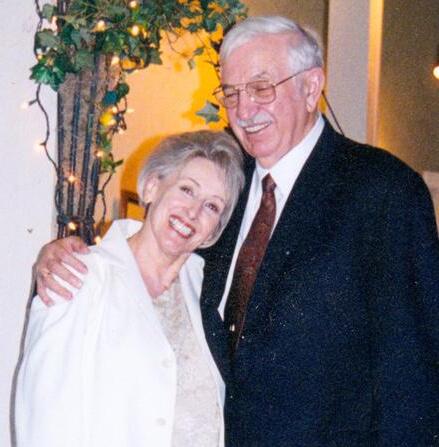
Emory Warner
Stephen and Elizabeth Warner
Jacquie Wehby
Susan Welby
Terry and Judy Welden
Thomas M. Welsh and Sue Carpenter
Warren and Mary M. Whitaker
Tiffiny Whitney
Gage and Amy Williams
Kathryn Williams
Ken and LeAnna Willmore
West Willmore
George Willock
Benjamin T. Wilson and Michele Mattsson
Donald and Kristin Winder
Natalie Winsor
Tina Wismer
Lawrence and Maida Withers
Michael and Nancy Withers
Pilar Witherspoon
Kate Wolsey and Jacqueline Green
Courtney Young
Tieg Zaharia
Christopher Zawislak
Lynette Zhang
Lee Zurligen
*Denotes donors who have deceased
Dean and Bonnie Stephens shared a passion for Utah art.
Dean, as a ranch and business owner, had an uncanny eye for artwork, picking amazing pieces and forging meaningful relationships with many of Utah’s top artists. Bonnie, as the director of the Utah Arts Council, was deeply immersed in the local creative community, its people, and projects. With the creation of the endowment, their family is excited to help the students and faculty in the U of U fine art department.
&
established 2023
40 STUDIO / 2023
The Dean and Bonnie Stephens Student Endowment in Art
Art History,
On the Cover
Front cover: The iconic Kingsbury Hall on Presidents Circle of the University of Utah campus has been a gathering place for connection and creative expression since it was completed in 1930.
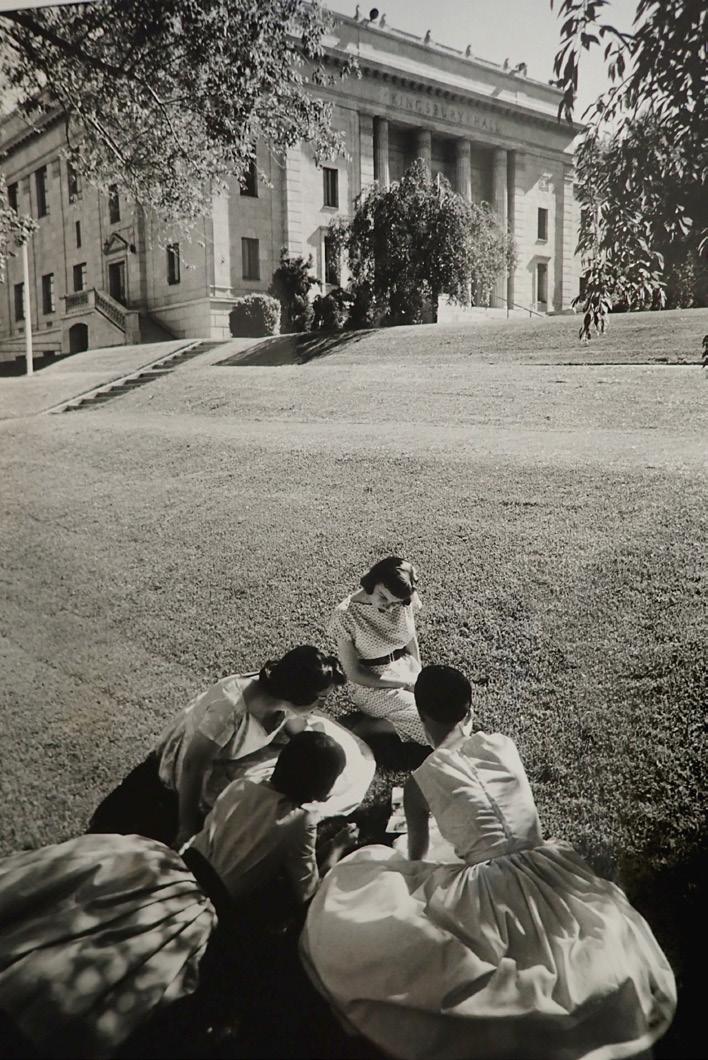
Editor-in-Chief
Marina Gomberg is the University of Utah College of Fine Arts Director of Communications + Marketing and an award-winning lifestyle columnist for The Salt Lake Tribune.
Writers
Emeri Fetzer has a decade’s experience writing about the arts. She is a Communications Specialist and Grant Writer for the College of Fine Arts. Before her current role, Emeri was a professional dancer in NYC. When she is not at the CFA, she is in the mountains with her husband Jason, and daughter Sylvie.
Debbie Hummel began her career writing features for The Salt Lake Tribune and then daily news for The Associated Press in Salt Lake City. She has been a freelance writer for the last 15 years. She is looking forward to her next adventure with her husband and two daughters, whether it’s hiking, biking, skiing, or traveling. She loves music, reading, and cooking.
Julia Lyon loves to write about ordinary people doing amazing things whether it’s dancers, artists, or kids discovering dinosaurs in their own backyard. Her debut children’s nonfiction book, “A Dinosaur Named Ruth,” was published by Simon & Schuster in 2021. When she’s not on deadline, you can find her strumming her ukulele and singing to her three kids.
Editorial Board
Dean John W. Scheib
Miriam Albert-Sobrino
Melissa Bobick
Kirstin Chavez
David Eggers
Emeri Fetzer
Marina Gomberg
Pablo Piantino
Xi Zhang
Visit finearts.utah.edu to learn more about what we’re up to and to find the digital version of this magazine with enhanced content.
Special Thanks
Devon Barnes
Denise Begue
Blake Bratcher
Sara Davis
Greg Hatch
Sheri Jardine
Samantha Matsukawa
Aaron Asano Swenson
Design by modern8
41 STUDIO / 2023
contributors
Photo: Joern Gerdts photography Repository: University of Utah, U Archives B Kingsbury Hall Fd 1 n023 (Altered)
University of Utah College of Fine Arts
375 S. 1530 E. Room 250
Salt Lake City, UT 84112
finearts.utah.edu
75 YEARS ROOTED CFA GA L A
We hope you’ll join us at 7P on Wednesday, Sept. 20, 2023, at Kingsbury Hall for our 75th anniversary celebration, CFA Gala 75: ROOTED. For more information, visit: finearts.utah.edu/gala. This powerful evening show will highlight the creative works and research of our students and faculty, celebrate our three 2023 Distinguished Alumni, congratulate our scholarship recipients, and thank our generous scholarship donors. The CFA Gala is free and everyone is welcome (no tickets required).

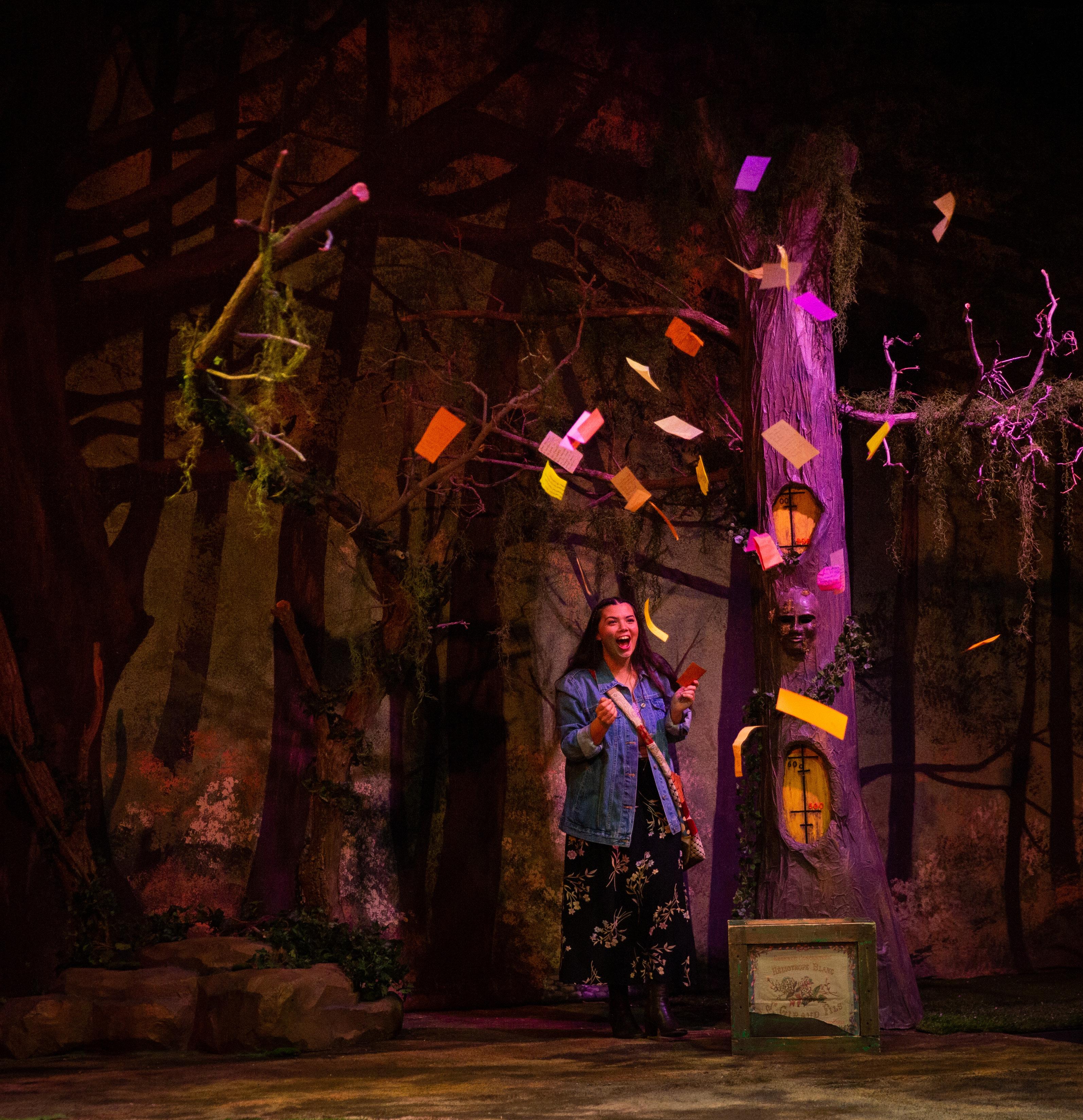
STUDIO
Non Profit Org U.S. Postage PAID Salt Lake City, UT Permit #1529 THE PLACE WHERE DILIGENCE AND EXCELLENCE BECOME INFLUENCE '23 THE PLACE WHERE DILIGENCE AND EXCELLENCE BECOME INFLUENCE
Photo: Todd Collins
Scenic Design: Kaitlyn Crosby
Costume Design: Emma Ashton
Lighting Design: Sara Clark
Prop Design: Arika Schockmel
Poems and love notes rain down from the branches of the magical forest of Arden on Celia (played by student Abyanna Wood) in the Department of Theatre’s production of Shakespeare’s “As You Like It,”dIrected by Robert Scott Smith. PAB Studio 115, March 17 – 26, 2023.















































 Zitkala-Ša photographed by
Gertrude Käsebier ca. 1898.
Photographic History Collection, National Museum of American History, Smithsonian Institution.
Zitkala-Ša photographed by
Gertrude Käsebier ca. 1898.
Photographic History Collection, National Museum of American History, Smithsonian Institution.









 Caio Rodrigo of Collage Dance leaps while portraying Martin Luther King Jr. in the first movement of the iconic work, “Rise”
Photo: Todd Collins
Caio Rodrigo of Collage Dance leaps while portraying Martin Luther King Jr. in the first movement of the iconic work, “Rise”
Photo: Todd Collins


 First annual Stansbury Island Art Fair held on Stansbury Island in April of 2021
Photo: Eric Robertson
First annual Stansbury Island Art Fair held on Stansbury Island in April of 2021
Photo: Eric Robertson













 By Emeri Fetzer
By Emeri Fetzer







